
PROFILE
Fazioli Pianos has been producing grand and concert grand pianos since 1981, when the company was founded by the engineer and pianist Paolo Fazioli. Passion for music, great artisanship, continuous technological research and strict material selection: these are the elements required for building a Fazioli piano. FAZIOLI refuses any industrial approach to manufacturing and pursues the objective of uncompromised quality. The factory is located in Sacile, in the Province of Pordenone (60 km Northeast of Venice) in an area boasting an ancient and prestigious tradition in the art of woodworking.
HISTORY
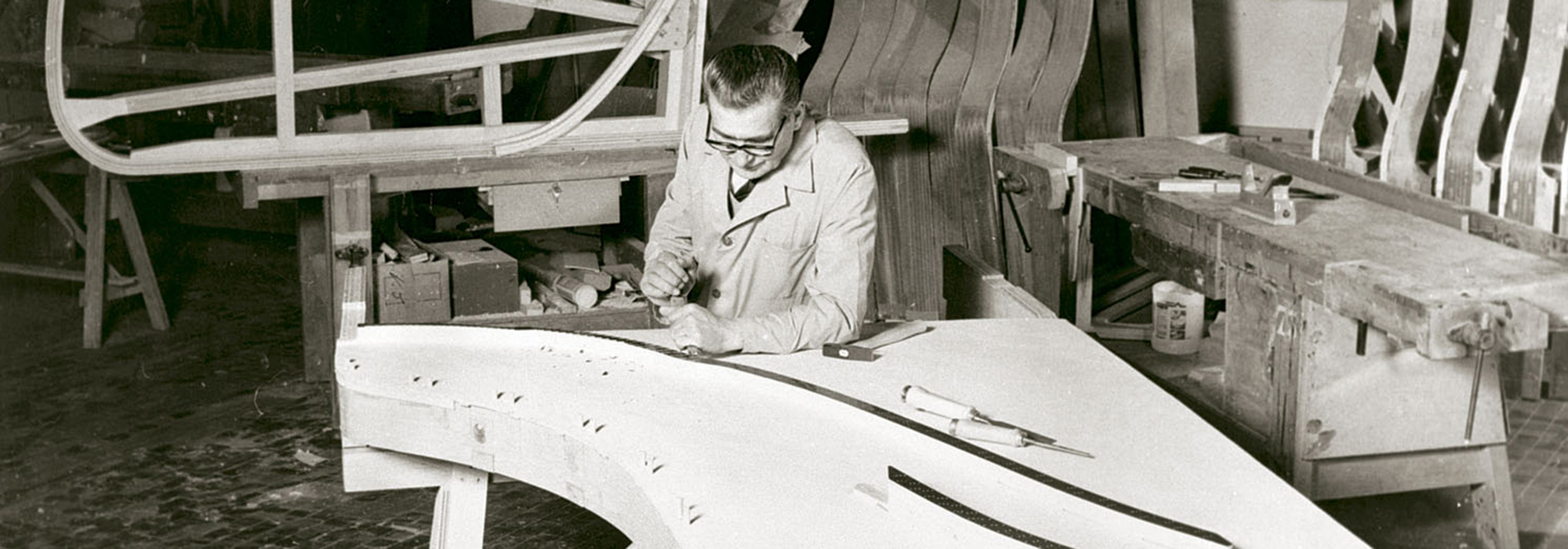
The history of the company is characterised by a growing number of successes: from the first international fairs, to the acquisition of important dealers worldwide, from the sales to the world’s most prestigious theatres to the always closer cooperation with renowned artists who exclusively require Fazioli pianos for their concerts. Among them, we can’t avoid mentioning the great pianist Angela Hewitt and living jazz legend Herbie Hancock.
PRODUCTION
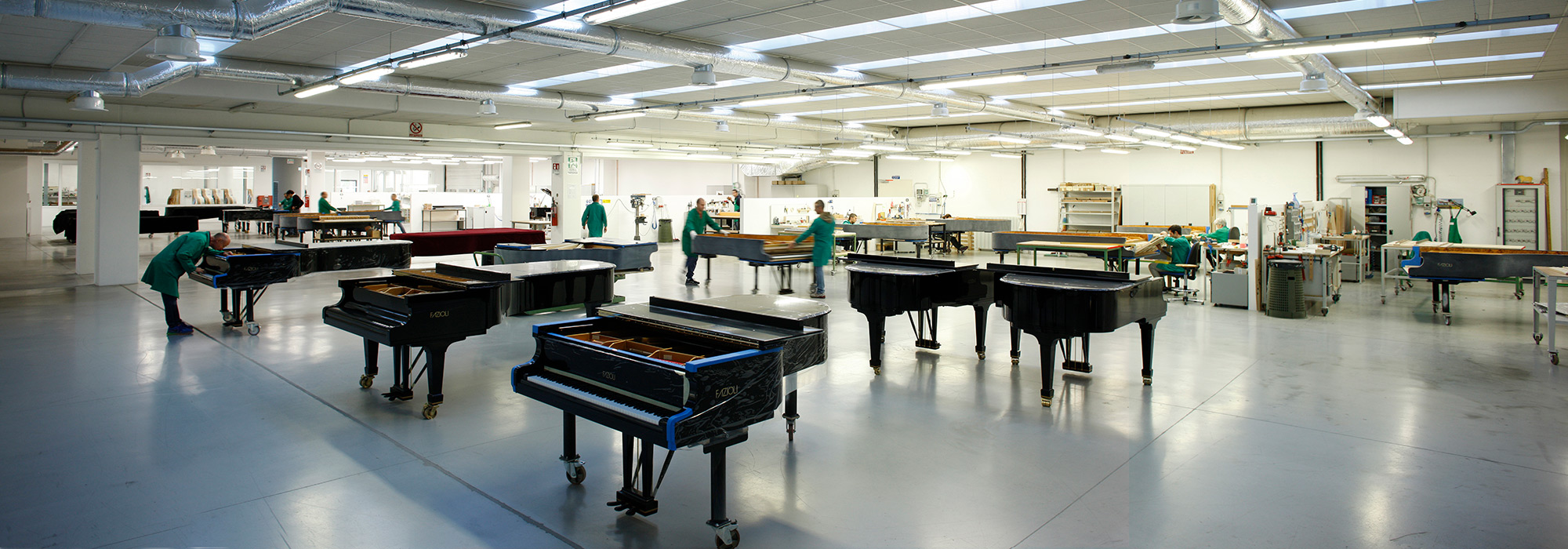
Production levels revolve around 140 pianos a year, reaching not only the European and North American market, but also China, Russia, the Far East and South America, as well as various emerging countries. The collection consists of six piano models of different lengths, from the F156 baby grand to the F278 and F308 concert grands. Upon request, any aesthetic modification can be applied to every model (Art Case and Design Collection). The company currently employs a staff of 50 people. The FAZIOLI technicians represent a highly specialized team working with the passion and professionality of someone who is aware of being constantly involved in the construction of a unique and precious object destined to the world of art. The whole production process, from the initial rim bending to the finished product, lasts about two years and requires, as we like to reiterate, technological expertise, great artisanship, rigorous material selection and continuous scientific research. All of these aspects, aiming at reaching uncompromised high quality and therefore much more important than a mere “long-standing tradition”, are associated with an obsessive attention to detail and represent the distinguishing features of our pianos.
INSTITUTION
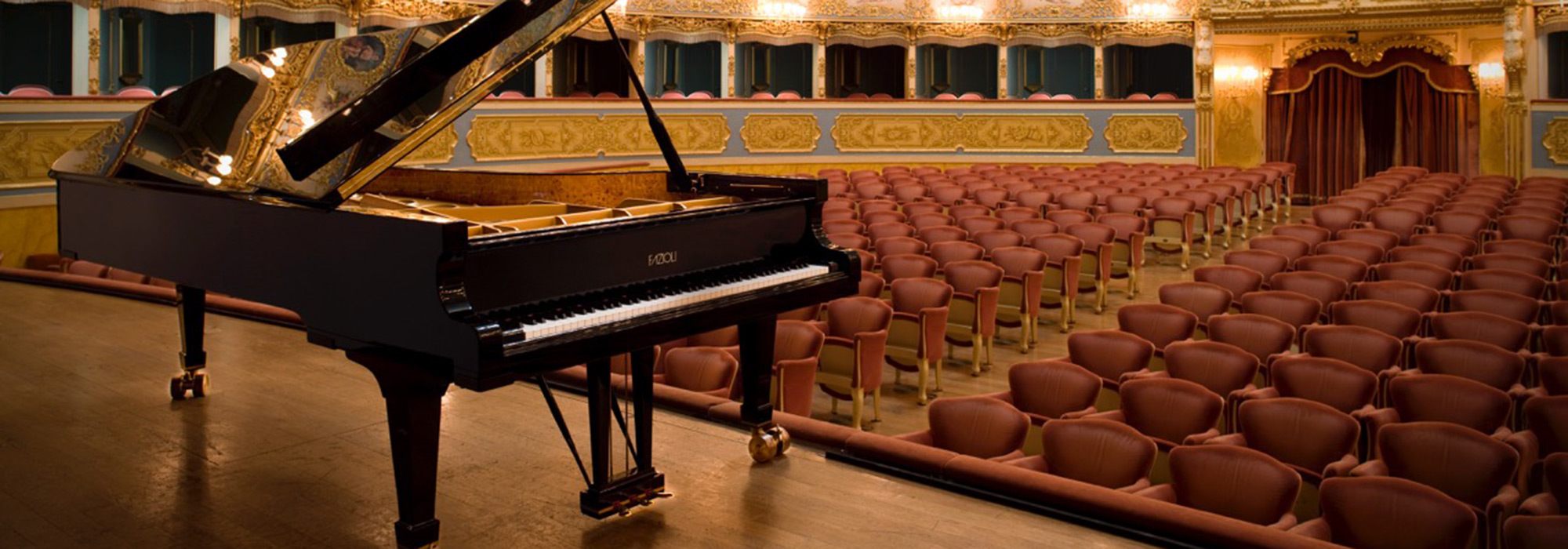
The success of a company which today is not just considered an authentically “Made in Italy” brand, but a brand in the truest sense of the word, is confirmed by the presence of FAZIOLI pianos at the world’s most important institutions for piano training of the highest level. The famous Juilliard School in New York has recently purchased a FAZIOLI concert grand, thus breaking a monopoly that, to that day, had been bonding the institution to another historic brand. FAZIOLI pianos are also present on the prestigious stages of Teatro La Fenice in Venice and the Palace of Arts in Budapest, the Beijing Grand Theatre and the Colburn School, as well as in the rooms of the Paris Conservatory and the Universities of Vienna, Graz and Salzburg… to cite only a few of the hundreds of institutions owning FAZIOLI pianos worldwide.
COMPETITIONS
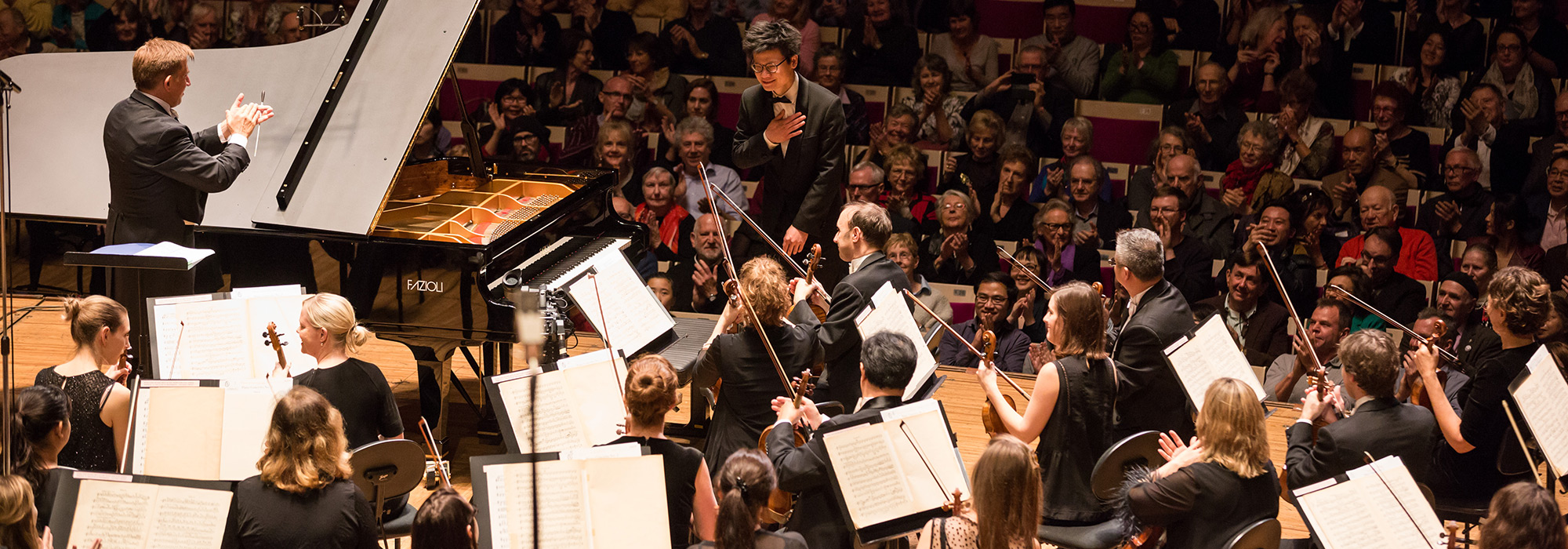
Alongside the many competitions that make exclusive use of FAZIOLI pianos, it is worth mentioning the prestigious international competitions offering candidates the possibility of choice among many brands, including FAZIOLI, like the “Chopin” Competition in Warsaw, the “Tchaikovsky” in Moscow, “Honens” in Calgary, “Franz Liszt” in Utrecht. In July 2016, a FAZIOLI concert grand was present at the prestigious Sydney Competition for the first time, gathering resounding success. In May 2017, the company was proud of seeing all finalists of the “Artur Rubinstein Piano Competition” in Tel Aviv performing all rounds on the FAZIOLI piano: first prize went to the 21-year-old Polish Szymon Nehring and second prize to the 25-year-old Rumanian Daniel Petrica Ciobanu, while 28-year-old Yevgeny Yontov was awarded the “Best Israeli Pianist” and “Best Chamber Music Performance” Prizes .
ETHICS AND CERTIFICATIONS

THE PIANO OF THE FUTURE
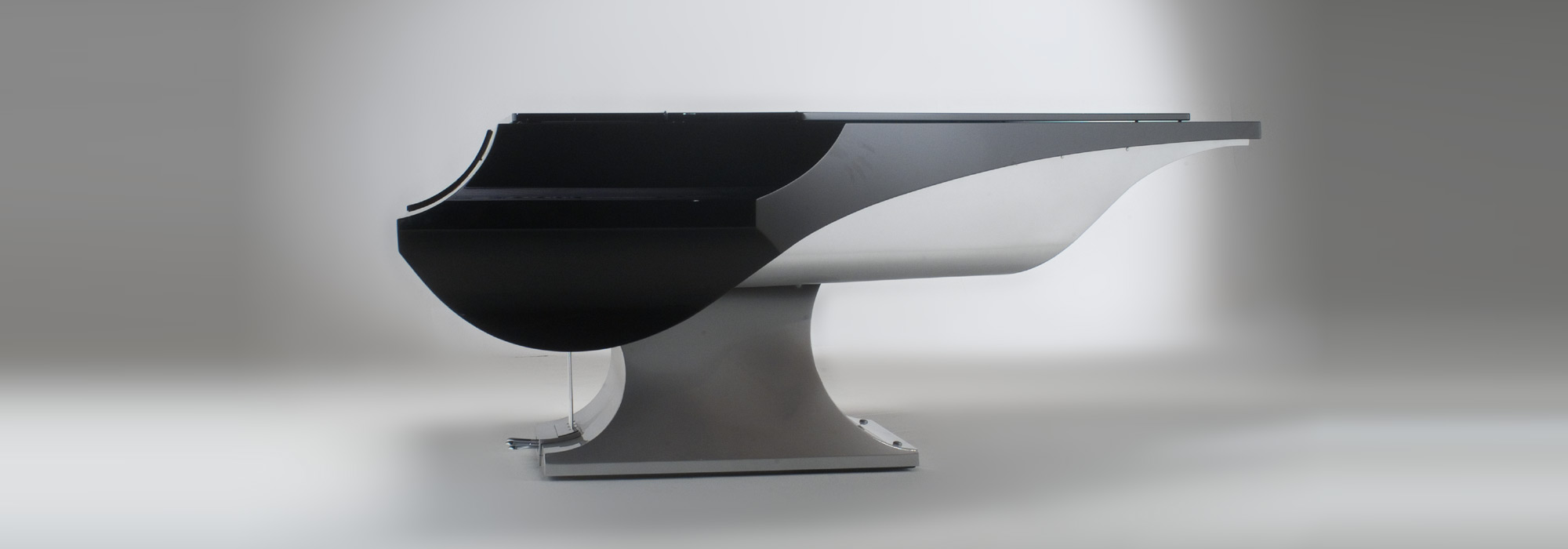
Historically focused on technological, productive and creative aspects – as stated by “The Economist”, a company that 40 years ago didn’t even exist, is considered today to be a great example for its strong commitment to research, innovation and promotion of its product: a piano constantly looking to the future. Every day FAZIOLI sees new challenges as an opportunity for growth: occasions to write another chapter in that history of the piano that the company does not wish to betray, but rather to carry forward with curiosity and intelligence.
THE PIANO OF THE FUTURE

MISSION & VISION
The FAZIOLI factory was born out of a challenge: demonstrating that the piano is not an instrument passively and indissolubly anchored to tradition. On the contrary, the company has always assumed that the piano, like any other work of the human intelligence, can and has to be subject to technological development and aesthetical improvement, without betraying the glorious past that wrote its history. Since the very beginning, FAZIOLI has consistently brought forward its philosophy, which can be summarized in few, however important, points:
- producing exclusively grand and concert grand pianos, destined to the professional market;
- excluding any imitation process and pursuing the idea of a FAZIOLI sound inspired by the Italian “Bel Canto”;
- individually handcrafting each piano (every FAZIOLI instrument is unique), refusing every industrial process;
- using only the best materials and cutting-edge manufacturing techniques;
- constantly carrying on scientific research through an internal “Research and Develoment” department and the collaboration with academic research institutions and external private subjects;
- meeting the demand of those who wish to acquire a unique and aesthetically fully-customized instrument (Art Case & Home Design collections).
Almost 40 years later, FAZIOLI strongly believes to have carried out this mission coherently, thus inspiring the whole acoustic piano manufacturing sector.

FAZIOLI MILANO
Fazioli Showroom
Via Conservatorio 17 – 20122 MIlano (in the corner with Corso Monforte)
milano@fazioli.com – +39 02 76021990
Open from Monday to Friday, h. 10 am – 1 pm and h. 2 pm – 7 pm. Saturday, by appointment.
The Fazioli showroom is located just a few steps from the Milan Conservatory of Music, near the Teatro Alla Scala opera house and the cultural heart of the city, in a now-historic store that has been a focal point for students, professionals and enthusiasts since 1919. It is the perfect location for a space dedicated to some of the greatest pianos in the world. Architect Domenico Fazioli curated the design for the restyling, aiming to truly capture the high quality and unique philosophy that distinguish the company. The showroom is marked by subtle elegance and boats 180 m2 of floor space and a large glazed frontage facing out onto via Conservatorio and Corso Monforte.
It is a showcase of excellence where visitors can touch and admire all of the models in the Fazioli range. Customers can experience the rich characteristics of the Fazioli sound in this spacious and welcoming setting and appreciate the high product quality right down to the smallest details. Classic black models are alternated with instruments featuring special finishes from the Art Case range of unique Fazioli creations.
In addition to showroom and sales activity, an excellent concert service is also offered, fully aligned with the company philosophy. The flagship instrument in the Fazioli range is available for hire: the F278 concert grand. The quality of the service is determined by the scrupulous technical assistance guaranteed both for preparation in the showroom and tuning in the concert hall. All of this is carried out exclusively by authorized Fazioli technicians in order to guarantee the excellent performance of the instrument.
This is more than just a store, it is a place to discover and fully appreciate the Fazioli world, also through recordings created on Fazioli pianos and exclusive merchandise.
Contact our staff to find out more.


DESIGN CONCEPTS
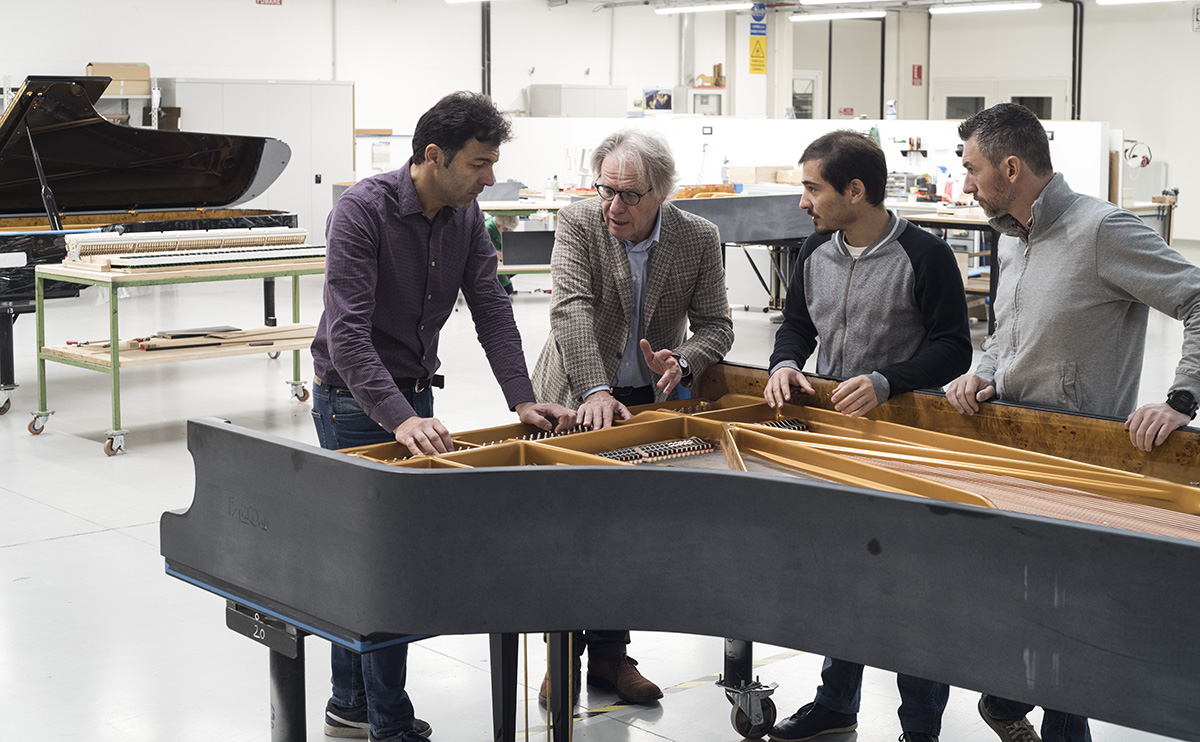
Every Fazioli piano emerges from the great vision of the company’s founder combined with the daily commitment of the many skilled and passionate colleagues that form the Fazioli technical team.
Over forty years, the company has succeeded in distilling the best of piano-building and musical tradition and experience from the last three centuries. This has been analyzed with a critical eye, considering the evolving tastes of players and audiences, and contributing with innovative solutions that improve the instrument in terms of all aspects of sound quality, playability, and durability with optimum performance.
Fazioli’s range of grand pianos offers all of the characteristics universally recognized as the most advanced and best suited for creation of modern concert pianos: powerful yet expressive sound, balanced and responsive to the pianist’s touch, along with the entire keyboard.
These characteristics are achieved through careful attention to many different aspects, all of the great importance:
- Accurate conversion of the pianist’s touch into a precise hammer strike on the string
- Fazioli piano action
- Balanced string design
- Duplex scale
- Iron frame
- Unrivalled strength and stability
- Precise soundboard design and newly patented Fazioli soundboard
- Rims
- Optimisation of the bond between soundboard and case
- Non-acoustic construction solution
1. ACCURATE CONVERSION OF THE PIANIST’S TOUCH INTO A PRECISE HAMMER STRIKE ON THE STRING
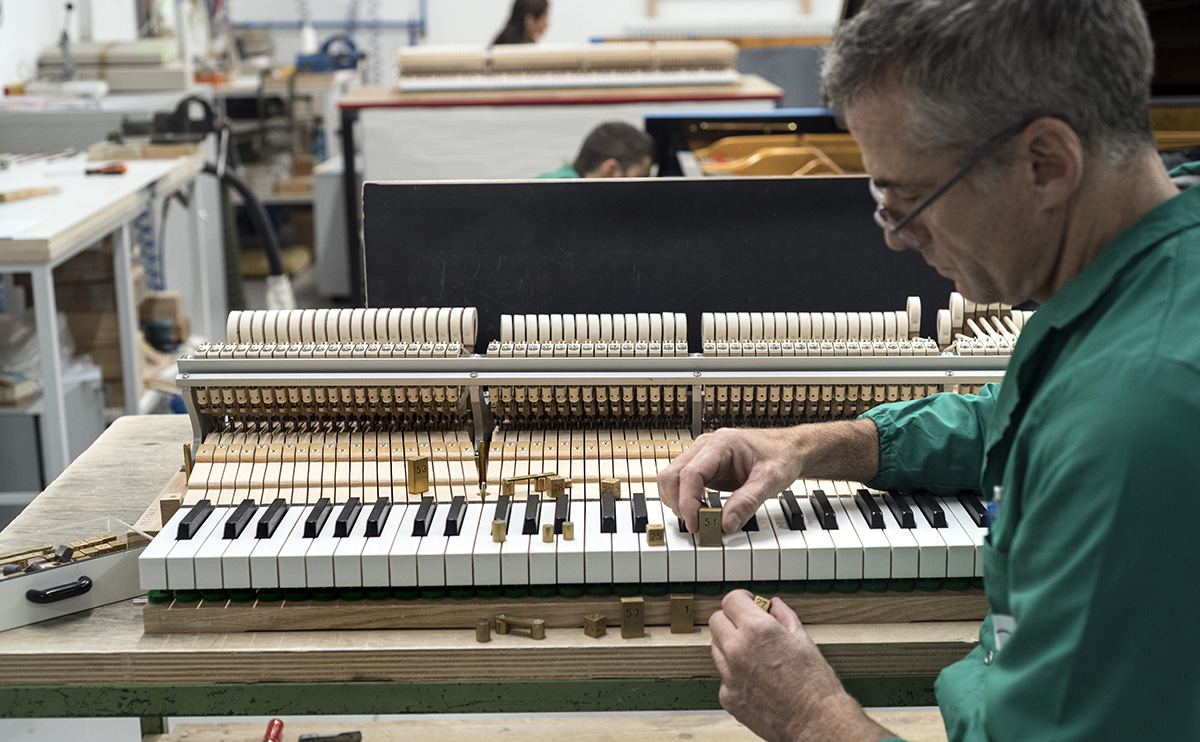
Every Fazioli piano emerges from the great vision of the company’s founder combined The geometric relationships and masses in the complex mechanics are calibrated to provide precise and immediate feedback to the pianist’s fingertips, offering a feeling of absolute control over the instrument and the resulting sound. Fazioli has created innovative and original patented solutions, ensuring that this feeling remains constant over time and use, and making mechanical adjustments simpler.
2. FAZIOLI PIANO ACTION (PATENTED ALL OVER THE WORLD NR. 2924683 OF 18/3/2015)
The structure of a traditional grand piano action is provided with bar elements made in drawn aluminium filled by wood or a composite material such as multiplex wood or similar. This can be the reason of drawbacks, mainly due to the need for frequent and complicated maintenance operations, above all due to malfunctioning or breakings, connected for example to the moisture absorbed from solid wood of the bars (when they are made of wood) or, due to unsatisfactory resonances, caused by a single body in metal or composite material. The new FAZIOLI patented action aims to be less sensitive with respect to humidity. A further positive aspect is that the keys are provided with greater smoothness and able to consistently detect the skill of the pianist by generating an optimal sound and a better timbre. In the new FAZIOLI action, the structure comprises a hollow section preferably made of aluminium, having at the inside a full structure, preferably a multilayer in wood or in such natural material. The three action bars (Hammer flange rail, Wippen flange rail, Let-off rail) are filled inside with particularly resistant multi-layers wood to avoid wear of the threads of the screws when these are removed for mechanical adjustment work. The rails are screwed into the special housings obtained on the action brackets, creating a perfect mechanical coupling. The result is a particularly rigid structure that does not dissipate energy. A big advantage is that the rails can be disassembled or replaced if necessary. All fastenings and materials have been subjected to extreme laboratory tests for mechanical stress and resistance to climate change.
3. BALANCED STRING DESIGN
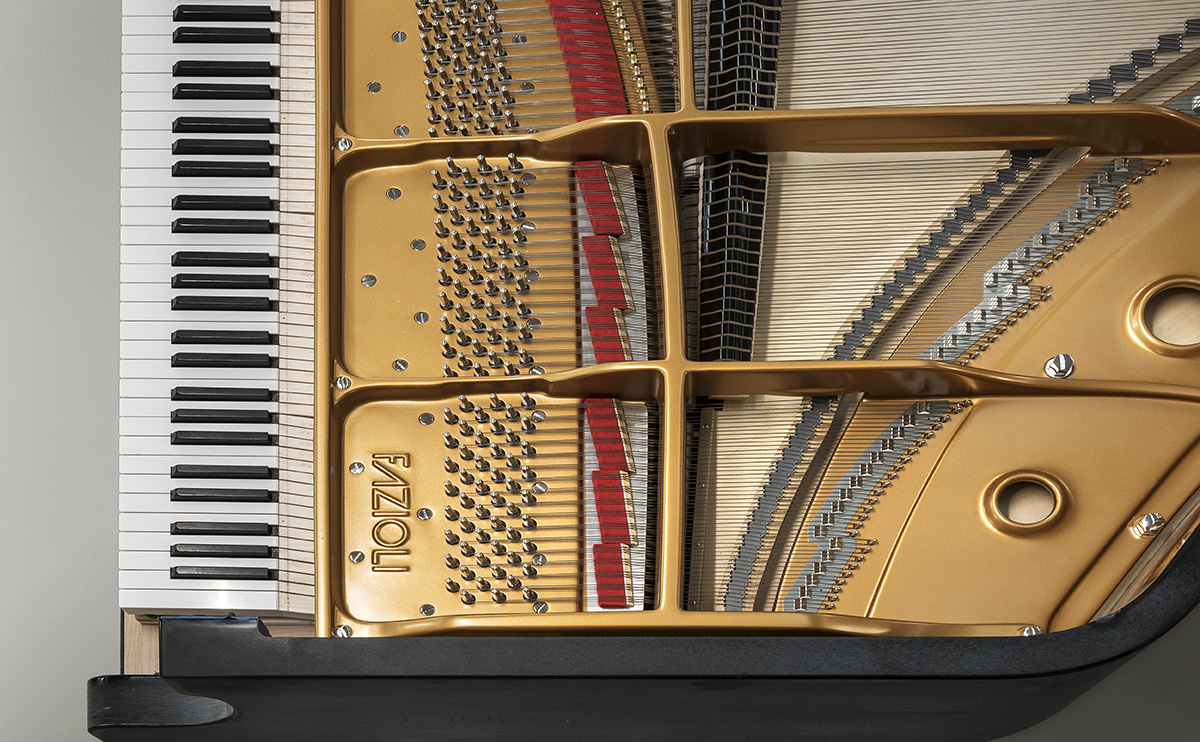
The characteristics of the strings (length, diameter, tension, density and flexibility of materials) and their distribution are designed to minimize acoustic non-uniformities between notes that are near to each other. It allows natural flow from the clear depth of bass notes to sweet, sustained singing mid-tones, and through to the gleaming brightness of the highest notes. Fazioli models actively contribute to the quality of the final sound via the possibility of adjustment, note by note, of both front and rear duplex scales. This precise adjustment undoubtedly increases the range of colour available to the highly trained ear.
4. DUPLEX SCALE
The duplex scale concerns the first two sectors of the piano. On the Fazioli pianos, both the positions of the two capo d’astro in the two first sectors and the not-speaking string portions (rear scale) are adjustable. The capo d’astro are made of bronze, have a triangular section and their basis are carefully rectified. Also, the basement of the cast-iron frame front bars (against which the capo d’astro is set), are carefully rectified and adjusted. Since the two contact surfaces are both perfectly rectified, the result is a perfect coupling. In this way, the capo d’astro can slide on the bases of the bars to reach the position that guarantees the string to have the correct speaking length between the bridge and the capo d’astro. The string lengths included between the bridge and the chromed brass triangles are called resonators or rear scale. The triangles are located under the strings, before the hitch pins, and can be adjusted with a special tool, slightly sliding them on the inox-stainless steel plate on which they are placed. In this way, the resonators reach the optimal tuning in relation to their main vibrating portions and, during the performance, are now able to vibrate sympathetically with the main speaking length of the string, enriching the piano sound.
5. IRON FRAME
The cast-iron frame is the component responsible for absorbing the compression exerted by the tension of the strings. It is made with a sand-casting process. Very tight tolerances are required of the caster with regard to flatness and weight. As with the wooden components, a stabilization period is also required for the cast iron frame. In fact, due to the different cooling of the parts, due to different volumes of cast iron from area to area, the frames maintain internal tensions. To ensure that these tensions are redistributed, the cast iron frame should be left to rest for at least the first six / eight months of life, before being used.
6. UNRIVALLED STRENGTH AND STABILITY
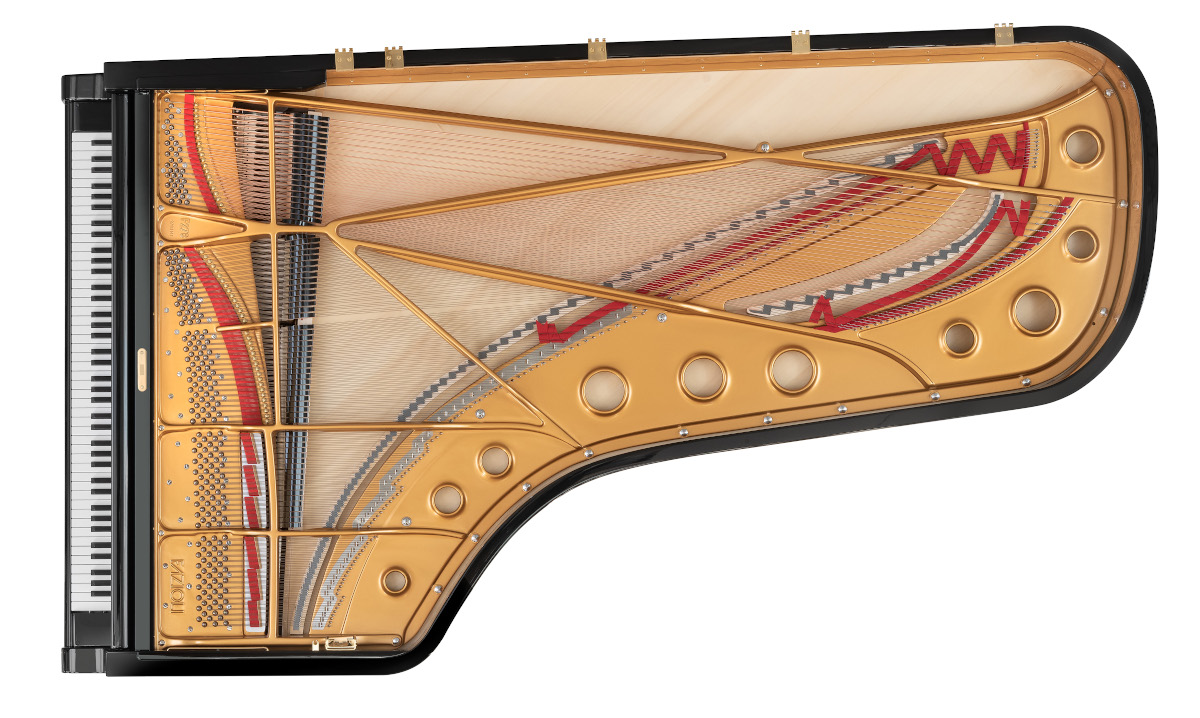
The crossed-stringing design, proven through the experience of a multitude of professional pianists and millions of instruments built over more than 100 years, offers the following benefits:
- Greater string length with the same soundboard dimensions.
- Optimization of bridge positioning on the soundboard.
- More compact cast-iron frame, without increasing weight, to better withstand the string tension (greater tuning stability).
- Greater mobility of the soundboard with a significant increase in dynamic range, colour and power of acoustics.
All other kinds of piano design (e.g.: such as the one with parallel strings in use two centuries ago) can be considered obsolete for the high-quality performance requested by the classic piano literature from Mozart till today.
7. PRECISE SOUNDBOARD DESIGN AND NEWLY PATENTED FAZIOLI SOUNDBOARD
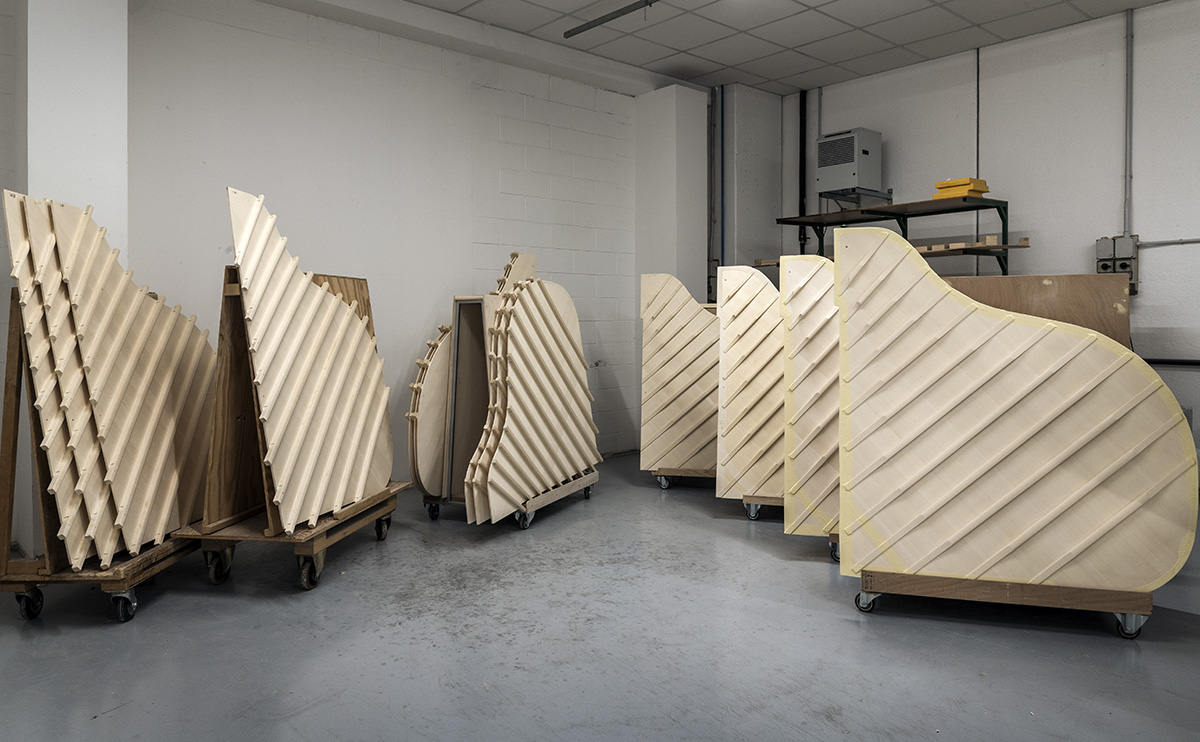
The ultimate goal of a piano soundboard is to maintain the full richness of the vibrations generated by the strings, gradually converting them into sound waves which are propagated efficiently through the surrounding air. The soundboard is a very complex component that represents the heart of the piano. It is formed of planks 11 mm thick and with a width varying between 8 and 12 cm. These are glued edge to edge forming a thin membrane, stiff and light at the same time. Ribs are glued to the underside perpendicularly to the grain of the soundboard, giving them greater uniformity and a slight upward curvature.Then, the mid-upper and bass bridges are glued on the opposite side of the ribs. The two bridges transfer the vibrations from the strings to the soundboard. The soundboard must react uniformly to the vibrations of the strings, absorbing energy and converting it into air vibration. Fazioli has dedicated a significant portion of its research to optimizing the soundboard, also patenting innovative solutions for its creation. It is built with the best spruce of the Italian Eastern Alps (including Val di Fiemme). The positioning of the ribs, their dimensions, the tapering at their ends and the relative length are the result of an infinite number of tests that have led to today’s results. The same applies to the method of gluing the bridges, to the tapering process and optimizing the soundboard curvature. The optimization of all the above parameters will henceforth be entrusted to the mathematical model recently developed by the R&D department, which is able to simulate the behavior of the soundboard according to different configurations.
The newly patented FAZIOLI soundboard consists in three wood layers with the following structure: Two layers of red spruce are superimposed with the grain in the same direction. In the middle, between them, it’s glued a spruce veneer (0,6 mm thick) which grain is perpendicular (90 degrees) to the grain of the outer layers. The three layers structure does not affect the sound but makes the soundboard itself much more resistant to potential cracks or swellings. As a consequence, it provides a particularly suitable solution in case of extreme humid or dry climates. However, the innovation is appropriate to every circumstance to guarantee maximum efficiency to the instrument over the years.
The three-layer soundboard is available only upon customer or dealer’s order.
8. RIMS
The rims are made with special presses that glue a 6 mm pack of solid wood sheets of the best Canadian maple and African mahogany, initially straight, shaping it with special clamps around the relative mould. Thicknesses of 6 mm are used which make the bending process more laborious and expensive but, in the end, we will have rims with fewer lines of glue. The preponderance of wood in the rims will give a positive participation in the formation of sound. Many manufacturers use 2/3 mm veneer to speed up the process, but the result will not be the same. For gluing, a special thermo-hardening glue is used, very hard and almost glassy, capable of withstanding high levels of humidity. In this way we will get a band that will be a real wooden monolith.
9. OPTIMISATION OF THE BOND BETWEEN SOUNDBOARD AND CASE
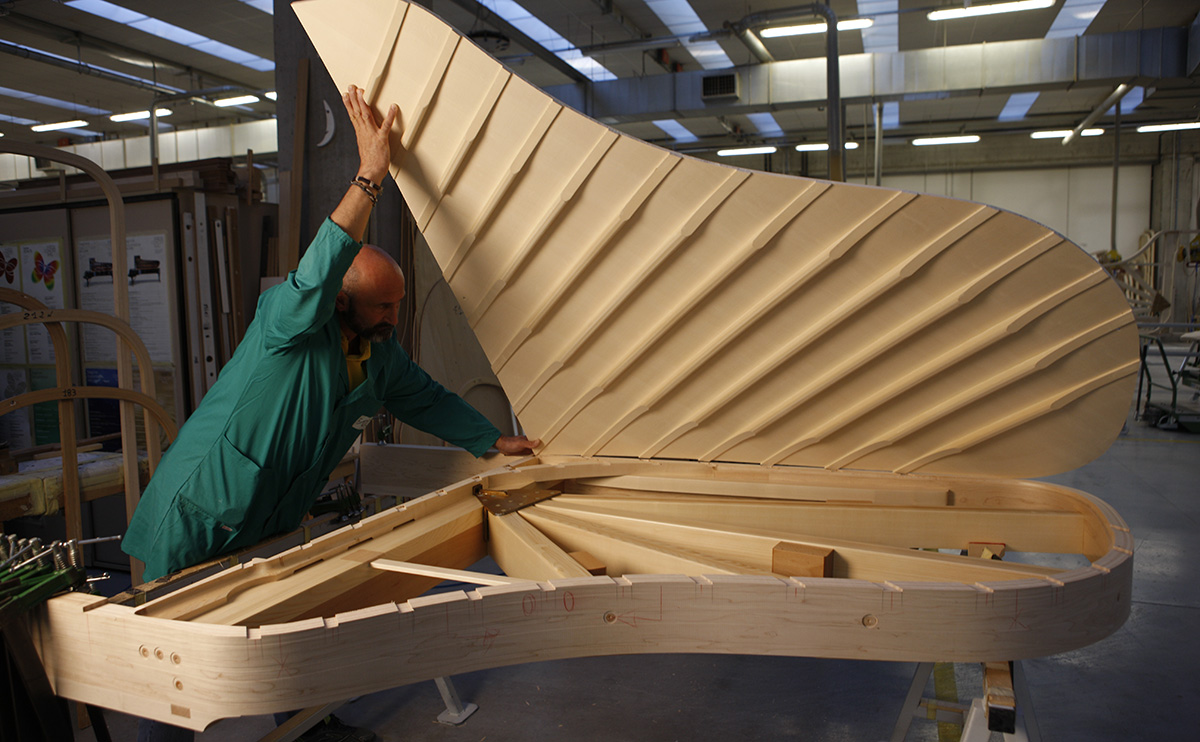
The functional vibrating part of the piano is restricted to two components: the strings and the soundboard. Instrument design must aim to maintain the musical vibrations within the limits of these two systems. As long as vibration energy bounces back and forth between the strings and the soundboard, the sound can spread and endure. If this energy flows out beyond the limits of the soundboard and propagates through the rims, fundamentally it is lost. In fact, the mass and rigidity of the case are such that it has very limited mobility: exactly the opposite of what is desirable in the soundboard. Ideally, the bonding of soundboard and rims should impede any transfer of vibrations from one to the other. Fazioli research aims to maximize this acoustic isolation, employing constantly evolving build techniques, involving not only soundboard and case but also the cast-iron frame and all other acoustically passive instrument components.
10. NON-ACOUSTIC CONSTRUCTION SOLUTIONS
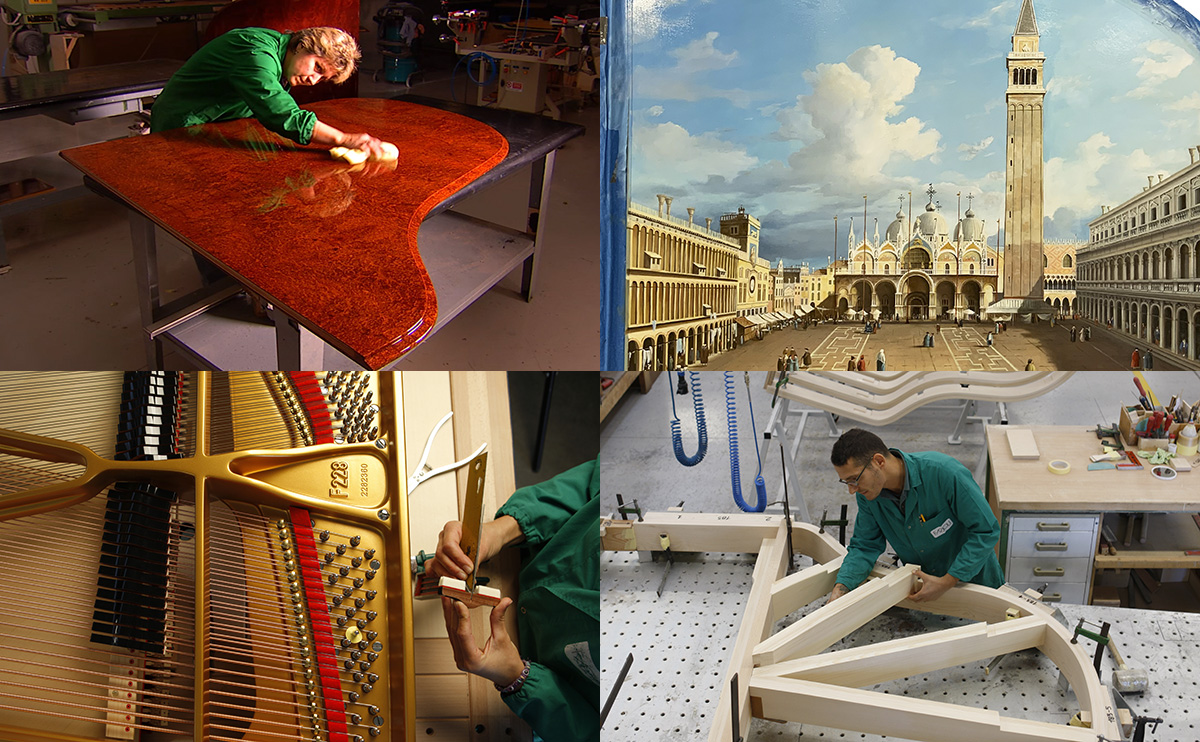
Fazioli pianos are continually perfected down to the most minute details also in terms of elements not directly linked to the production of sound, but intrinsically connected to the quality of the final product. The general design of the instrument while respecting the shape of the classic grand piano has been re-proportioned, all the edges (for example) have been removed. The hinges and all the visible accessories, which are commonly made of brass, in our case are gilded in a 24-carat galvanic bath. This gilding process will avoid oxidation of the brass, letting the surfaces be bright and intact for a very long time. Every screw, joint, bond and other construction detail is carefully analysed to identify potential improvements. There is always room to improve, on a range of fronts: sourcing of materials and components, glues and paints, processing, build and assembly, packaging, final inspection, testing and sign-off, transport and shipping, and the musical use of the piano itself. This is a journey towards perfection that involves everything and everyone, working together. And it is a journey that we will always be dedicated to.

MAINTENANCE
ENVIRONMENTAL TIPS
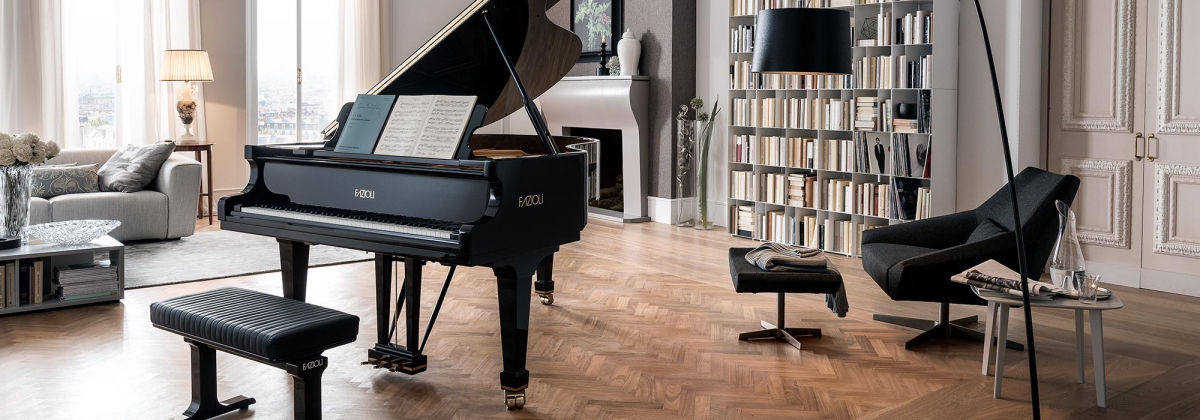
Wood is a natural, living material, which reacts to the changes in temperature and humidity of the surrounding environment. Since the piano mainly consists of wood, it is preferable to place it in rooms where temperature and humidity levels do not fluctuate too drastically. If relative humidity is higher than suggested levels (as is the case in humid regions, especially during transitions between seasons and the summer months), we recommend using a common dehumidifier which is easily available. Humidity levels should never be lower than 30% or higher than 70%. If relative humidity is too low, as is the case in heated rooms during the winter months, we recommend using a common humidifier, again easily available on the market. The piano should never be left in a dry room. We suggest positioning your piano far from windows and external walls. In order to avoid damage to the instrument, we suggest that you should not keep the piano under direct sunlight. We also suggest that you do not place any objects on the piano as this may cause vibrations. Please note that should any liquid fall on the piano you might risk serious damage.
MAINTENANCE
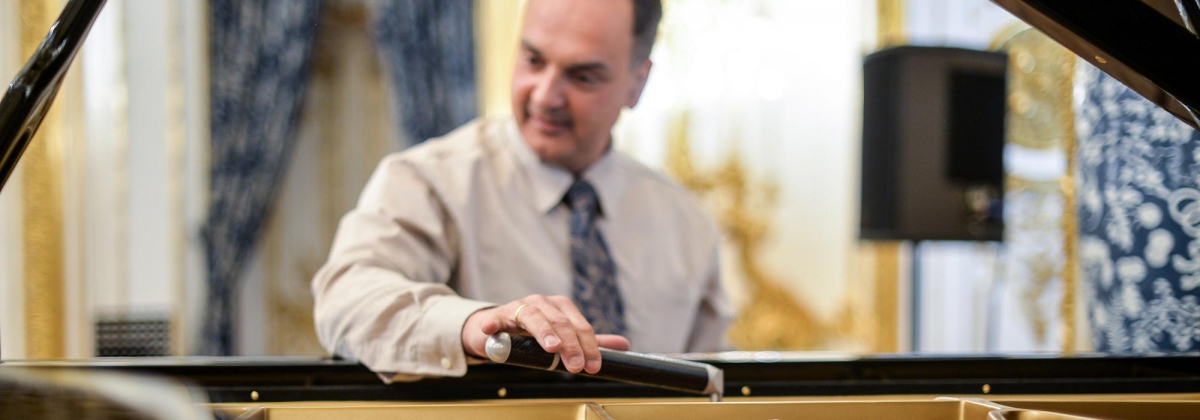
Purchasing a piano represents a long-term investment; maintaining it in optimal conditions is of paramount importance for helping maintain the value of your instrument over time. The lifespan of your piano greatly depends on the quality of its maintenance. Routine maintenance should only be entrusted to an officially certified technician. There are three determining factors influencing the acoustics and functional qualities of a piano:
- Tuning
- Action
- Voicing
TUNING
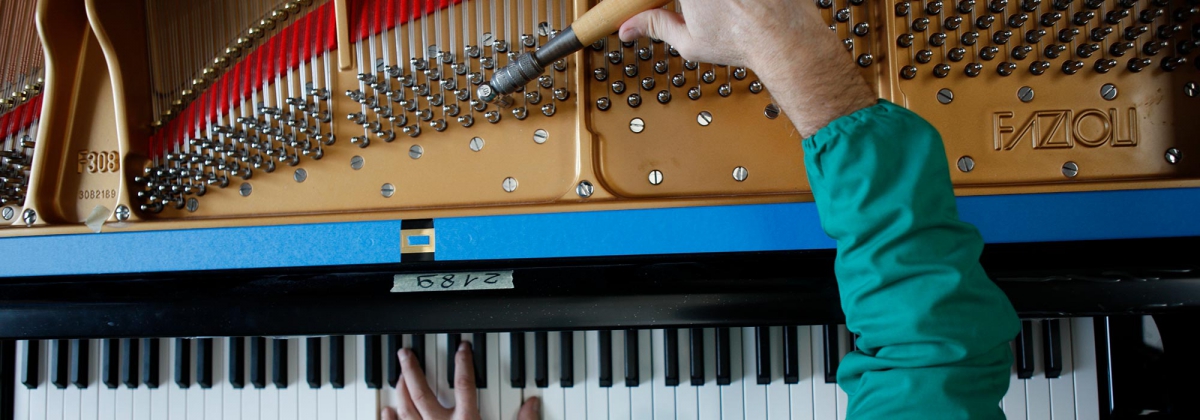
The human hear can adjust so easily to different sound conditions, that it is often difficult to understand when an instrument is “out of tune”. The tuning of a piano varies according to a gradual process to which our ears become accustomed. Human hearing is unable to perceive slight frequency alterations, especially if these changes occur in all registers. If the tuning is not carried out regularly, the education of the ear can be heavily affected, just as the conditions of the instrument itself. The tuning frequency varies according to the usage made of the instrument, both in terms of time and intensity. In any case, it is always advisable to call one’s own trusted technician no less than twice a year.
3. BALANCED STRING DESIGN

The characteristics of the strings (length, diameter, tension, density and flexibility of materials) and their distribution are designed to minimize acoustic non-uniformities between notes that are near to each other. It allows natural flow from the clear depth of bass notes to sweet, sustained singing mid-tones, and through to the gleaming brightness of the highest notes. Fazioli models actively contribute to the quality of the final sound via the possibility of adjustment, note by note, of both front and rear duplex scales. This precise adjustment undoubtedly increases the range of colour available to the highly trained ear.
ACTION REGULATION
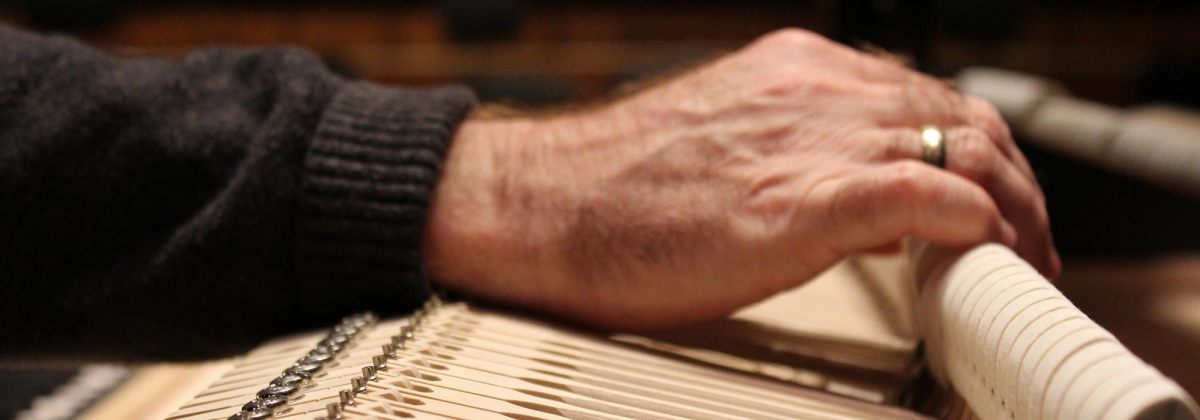
As you do not play each note the same number of times, the keyboard and action are subject to uneven wear, which brings about slight alterations in the response of the action itself. Maintaining a well-regulated action is essential to preserving a fine touch and tone. Well-regulated actions and keyboards are essential for the reliability of the performance. You should therefore ask your technician to carry out an action regulation at least once a year, as to rebalance these normal slight response alterations of the keyboard.
VOICING
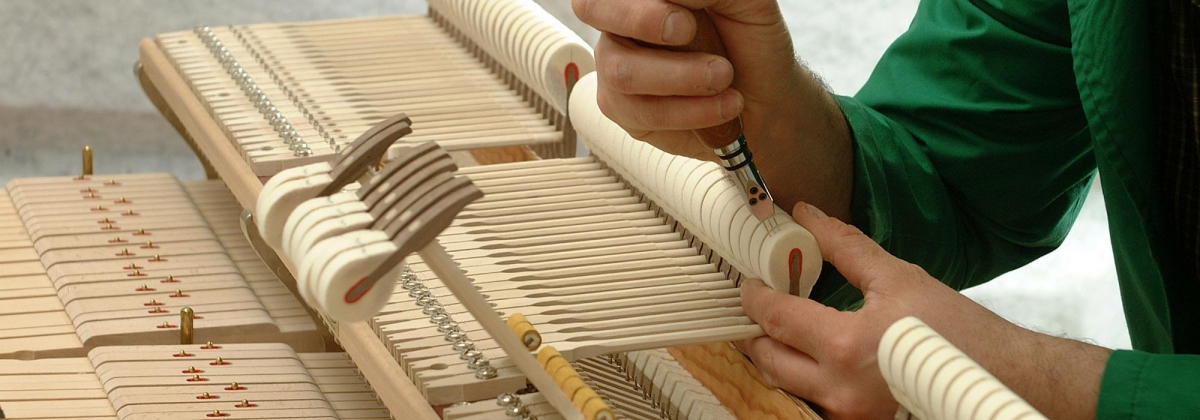
It’s the technique used by the technician to vary the density of the felt on the hammerhead, which greatly affects the tone quality of the piano, by means of a three-needled tool. In fact, the hammerheads tend to harden unevenly because of normal wear and climate variations. A suitably qualified technician will re-establish the evenness and beauty of tone by pricking the surface of the felt. For the above-mentioned reasons, even if your piano is rarely played, we recommend the following:
- Tune your piano at least twice a year
- Have the action and voicing checked at least once a year
- Always rely on a highly qualified technician
CARE OF A FAZIOLI PIANO
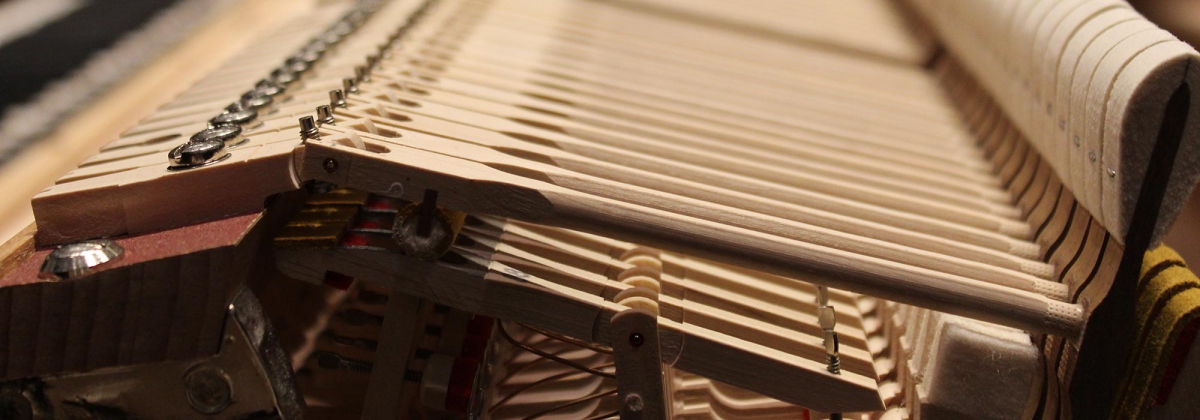
The various piano components can be finished and treated in different ways. As a consequence, the care of these surfaces is diversified and must be carried out with the utmost attention. To clean matt surfaces, we recommend using a slightly moistened soft cloth with non-abrasive detergent (without any kind of solvent) applied with slight pressure in clockwise motion. To clean high-gloss surfaces, we recommend dusting them using a slightly moistened soft cloth with non-abrasive detergent. Do not under any circumstances use any type of abrasive detergent. Metal parts need maintenance as well. The hinges and screws are plated with 24K-gold and tend to develop a dust film, which can be removed with a slightly moistened soft cloth moistened with non-abrasive detergent. In order to remove oxidation from the brass Fazioli logo and pedals, we suggest using common non-abrasive deoxidizing creams, which can be easily found on the market (Sidol or similar products). To clean the keyboard, we recommend using a slightly moistened soft cloth with non-abrasive detergent. It is important to avoid moistening the sides of the keys.
PIANO MOVING
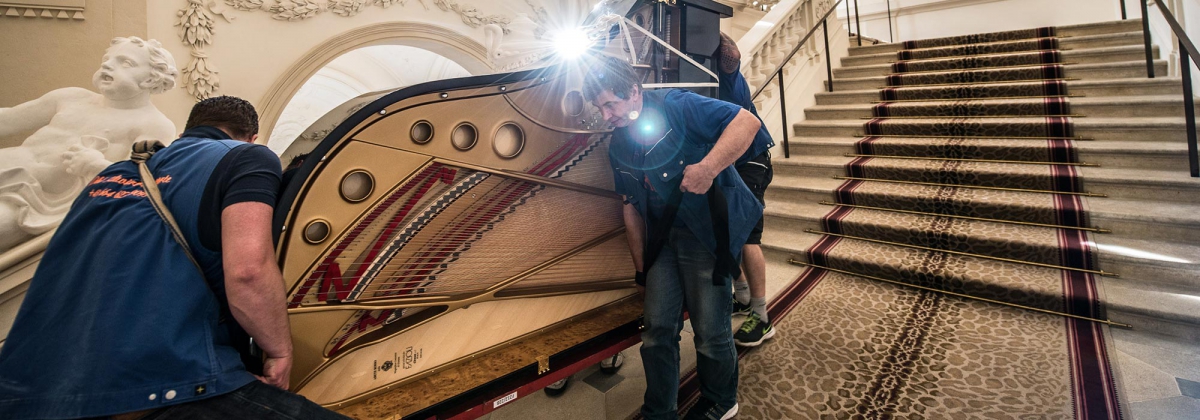
In case you need to move your piano, we recommend calling a specialized firm. The use of unqualified personnel can be risky, since moving errors can cause serious damage to the instrument.

EBONY BLACK & WHITE
A special « Black and White » ebony essence, precious and rare wood from South-Eastern Asia and Laos, covers this F183 model, where tone gradations and shades leave space to knifelike streaks and intense colours, thus creating a pattern of sharp contrasts. This unusual finish can adapt to a modern design just as much as it can add value to the most elegant locations.
The technical files present on this website represent only a selection of the many special “Art Case” pianos built so far. Since wood is a natural product whose features are unique and unrepeatable, the veneers visible in these pictures are purely indicative and non-committing with regard to future creations.
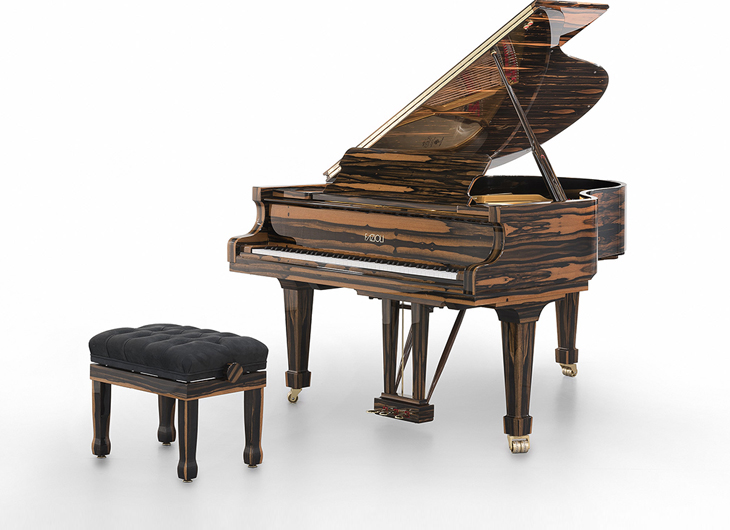
GALLERY
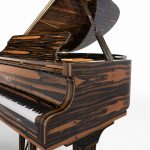
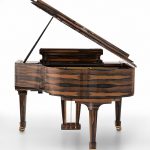
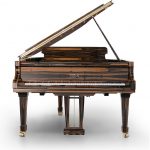
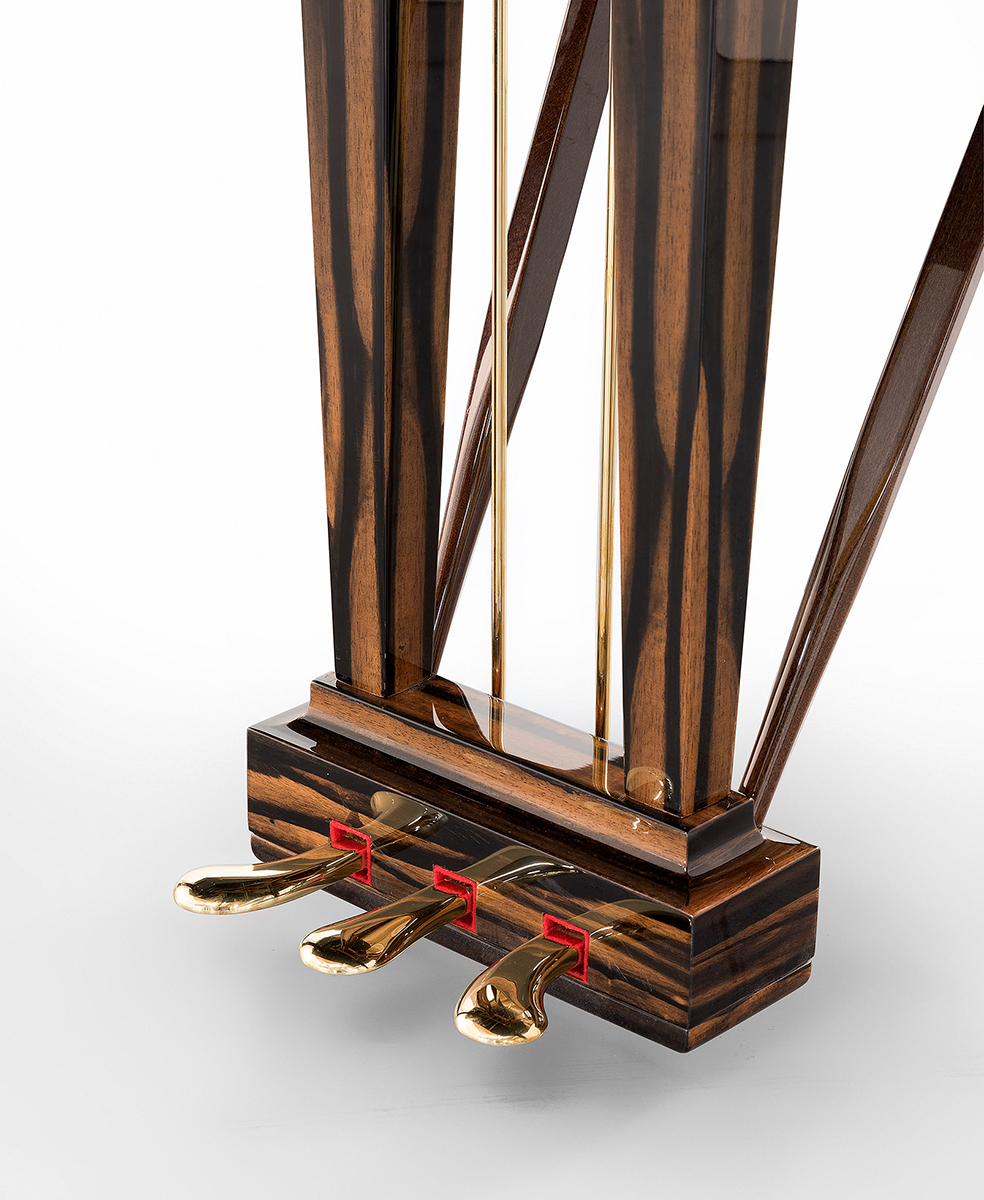
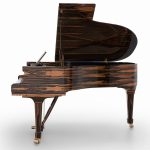
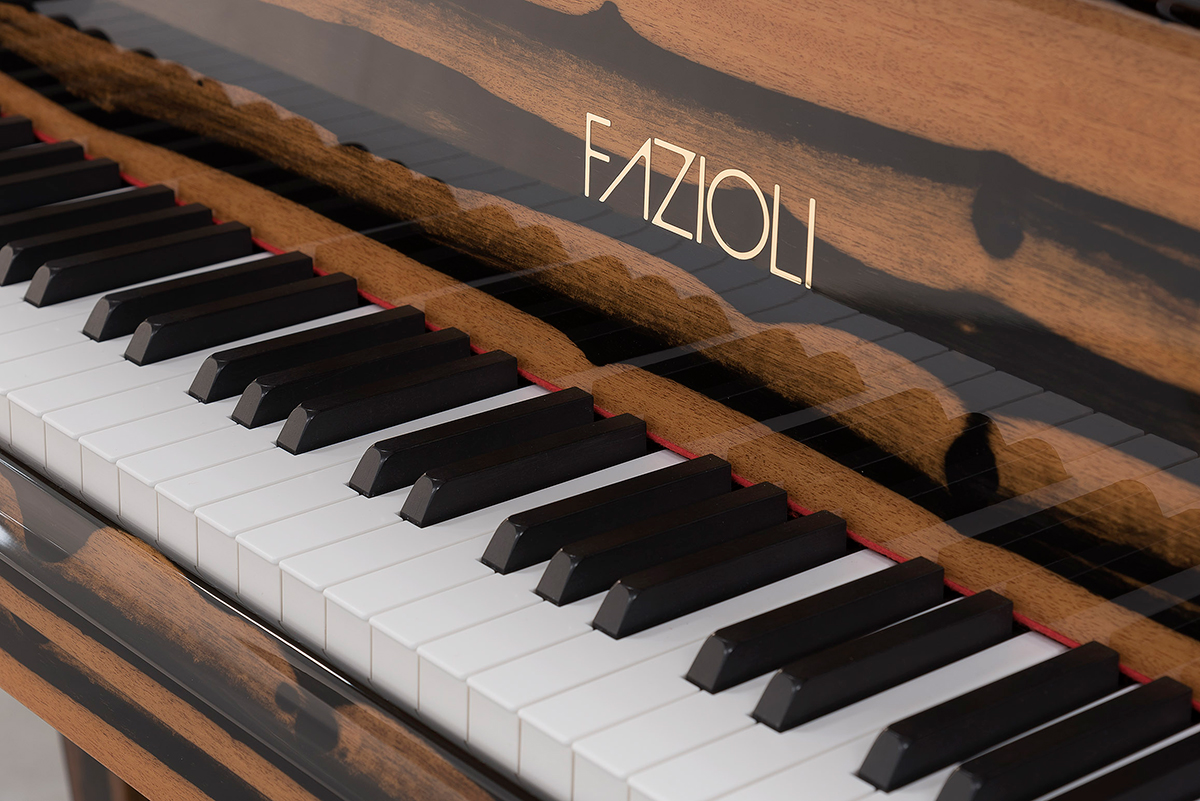

GOLD LEAF
A 24-carat gold leaf completely covers this F228 piano model, giving it a touch of royal prestige. The transparent polyester that protects the gold leaf gives the surface a precious luminosity of iridescent shades.
The technical files present on this website represent only a selection of the many special “Art Case” pianos built so far. Since wood is a natural product whose features are unique and unrepeatable, the veneers visible in these pictures are purely indicative and non-committing with regard to future creations.
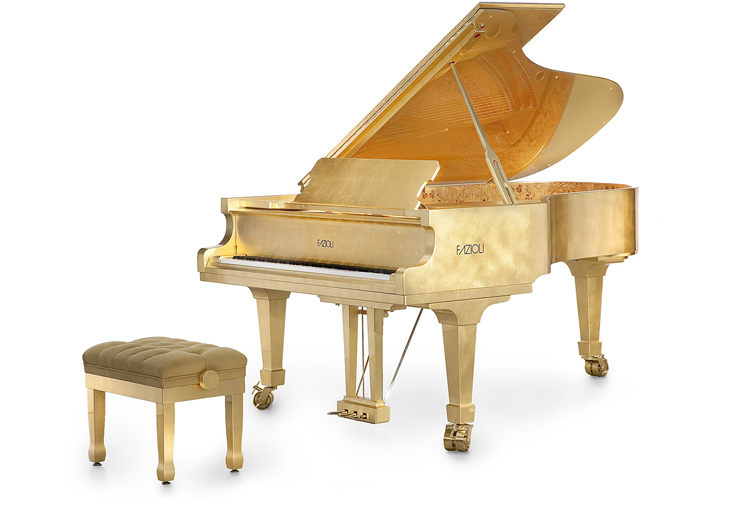
GALLERY
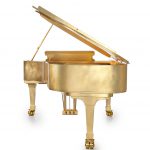
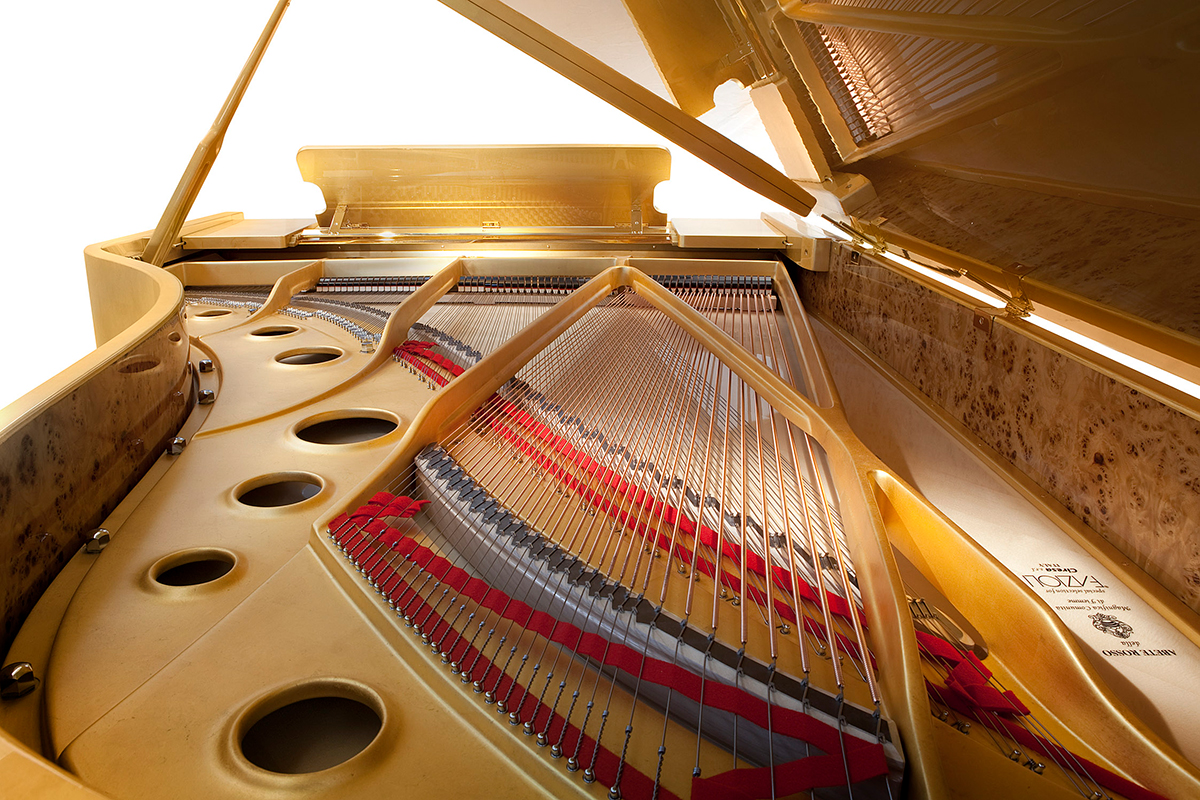
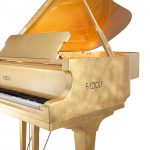
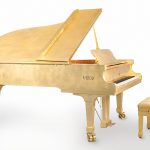

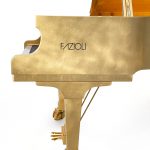
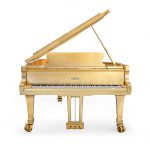
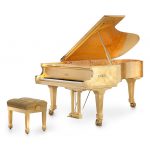

GOLD LEAF
Fazioli refuses to impose limitations on Artists, convinced that they should have the freedom to choose on which instrument to play, based purely on the belief that it represents the best vehicle to express their talent. For this reason, Fazioli has always been opposed to signing exclusivity contracts with pianists, preferring instead the establishment of reciprocal partnerships for the sake of the pure artistic purpose, which should always take precedence over commercial considerations.
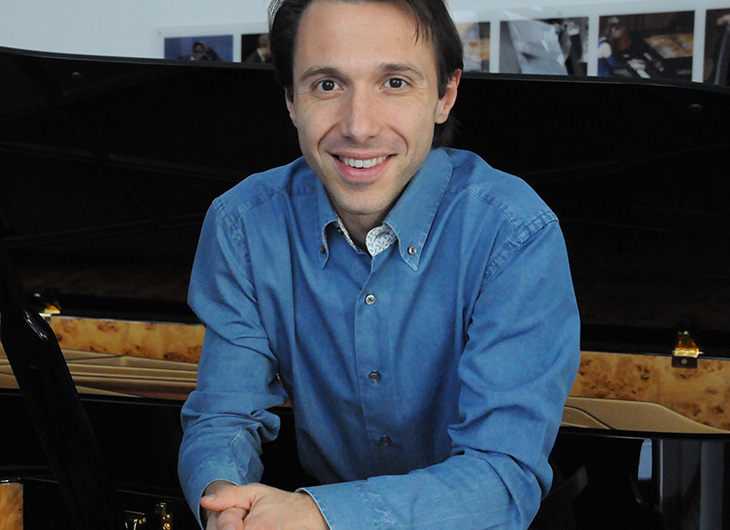
MAURIZIO BAGLINI
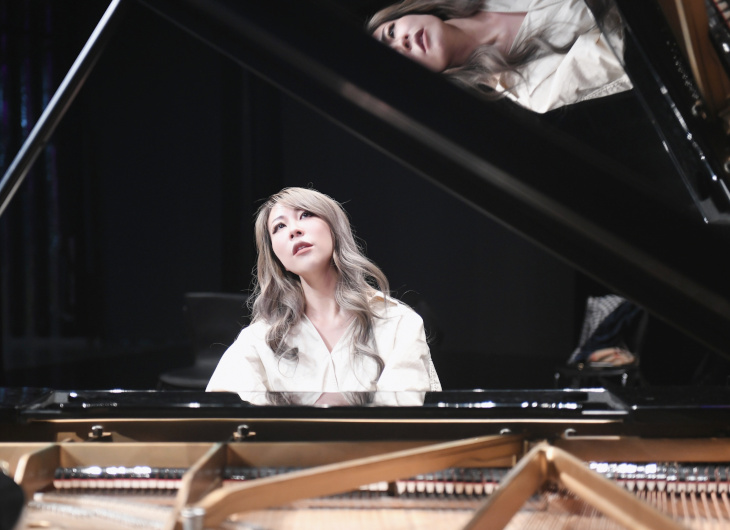
JENNY Q CHAI
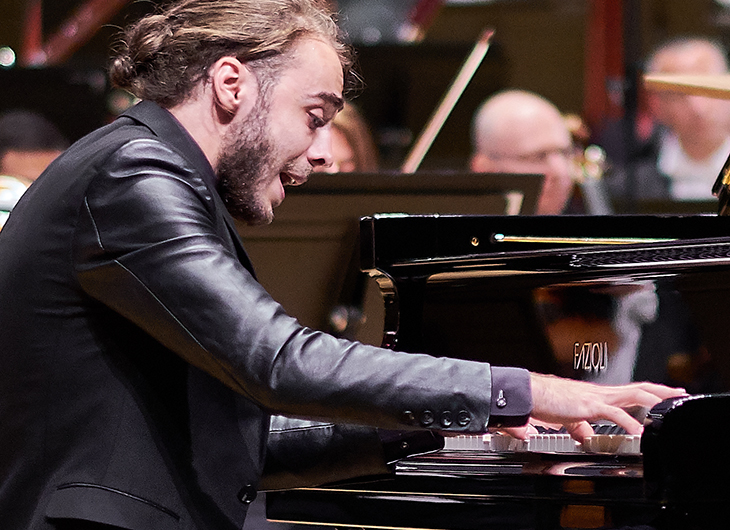
DANIEL P. CIOBANU
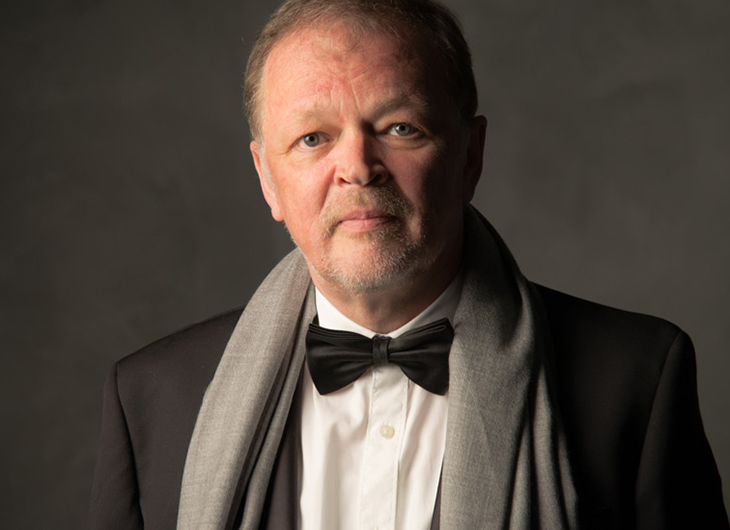
NIKOLAI DEMIDENKO
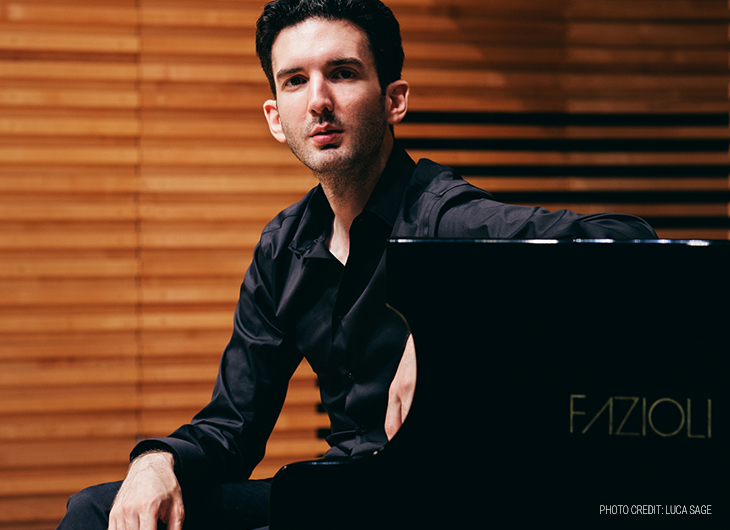
EMMANUEL DESPAX
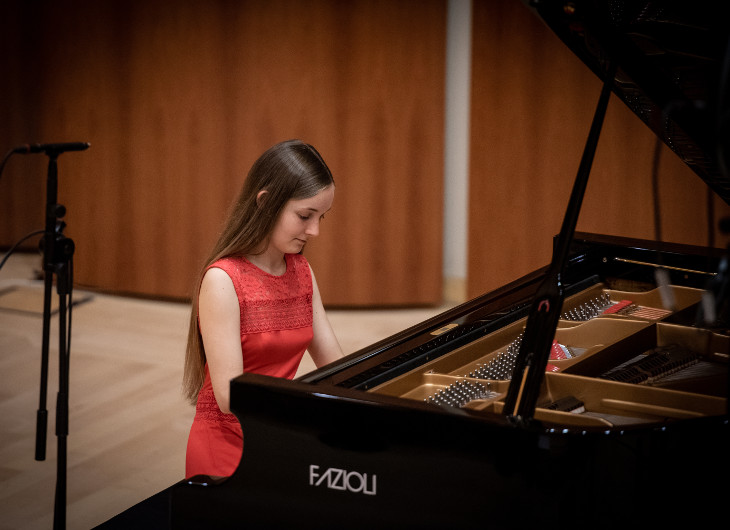
ALMA DEUTSCHER
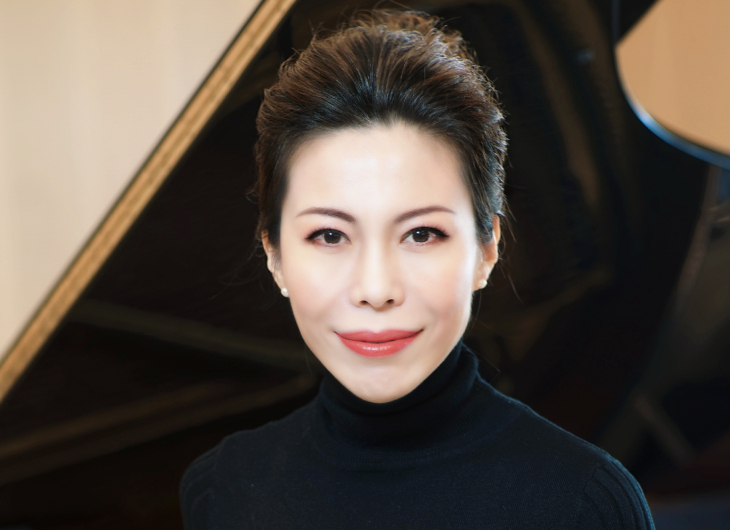
ZHANG DINGYUAN
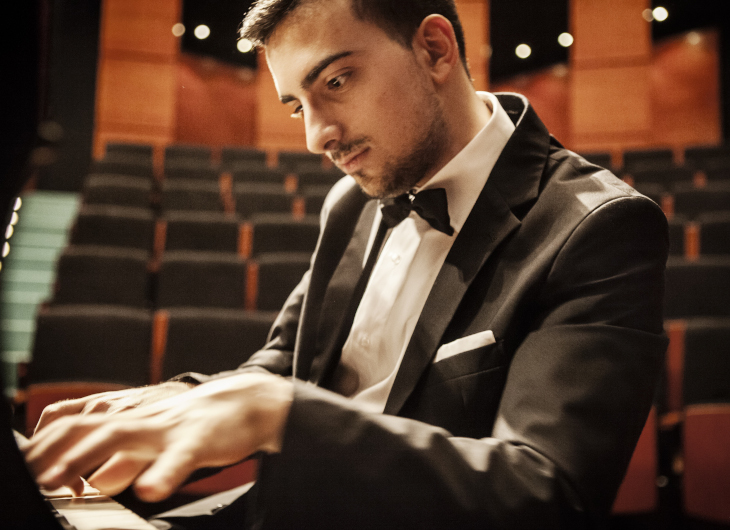
ALBERTO FERRO
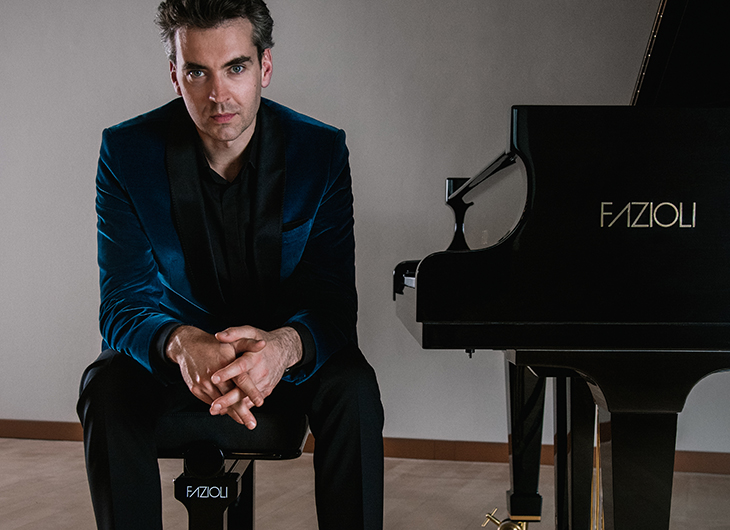
GORAN FILIPEC
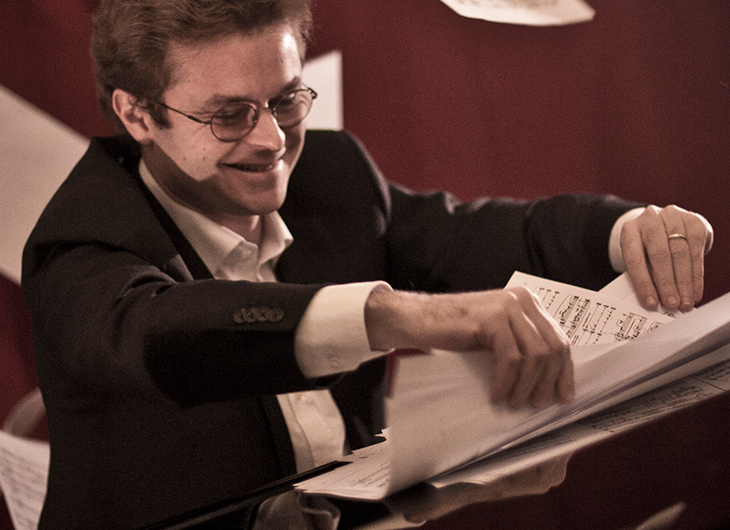
MATTEO FOSSI
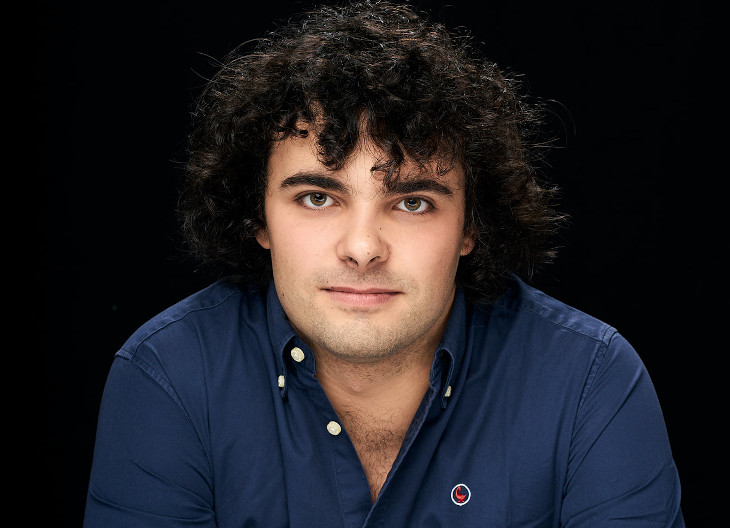
MARTÍN GARCÍA GARCÍA
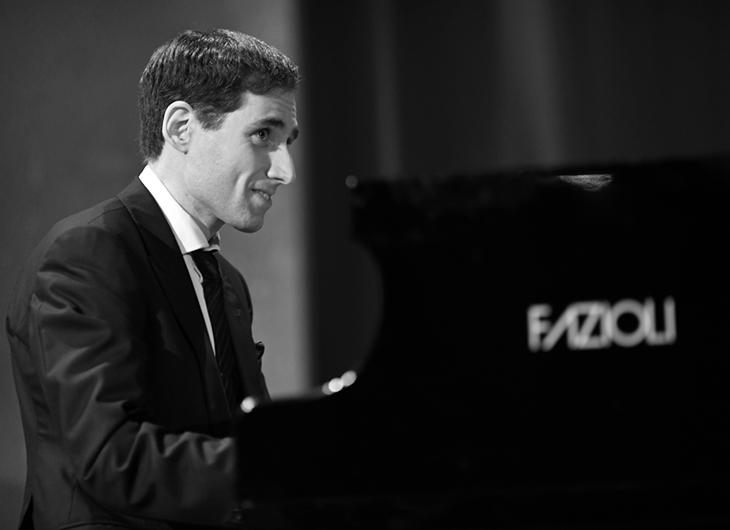
BORIS GILTBURG
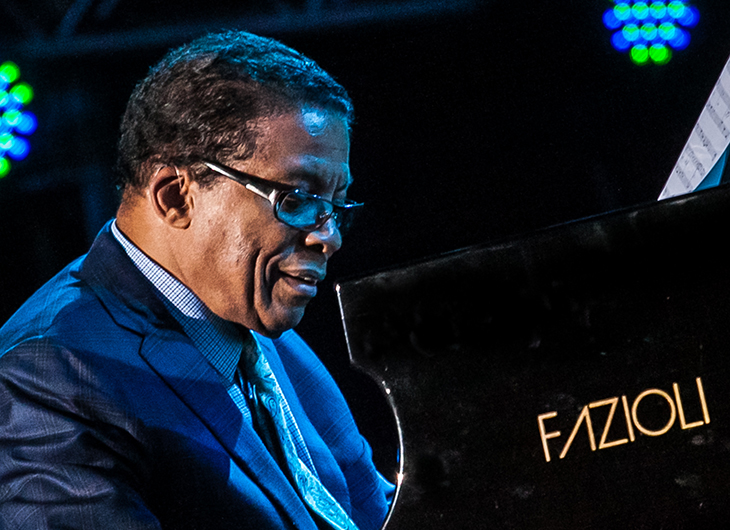
HERBIE HANCOCK
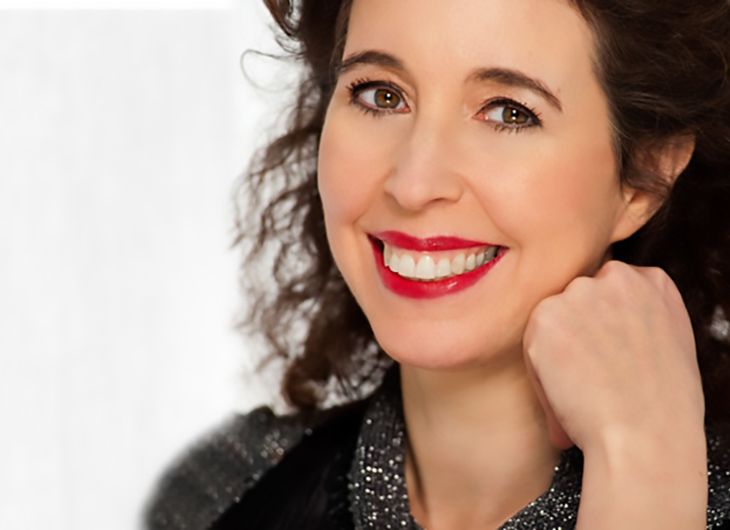
ANGELA HEWITT
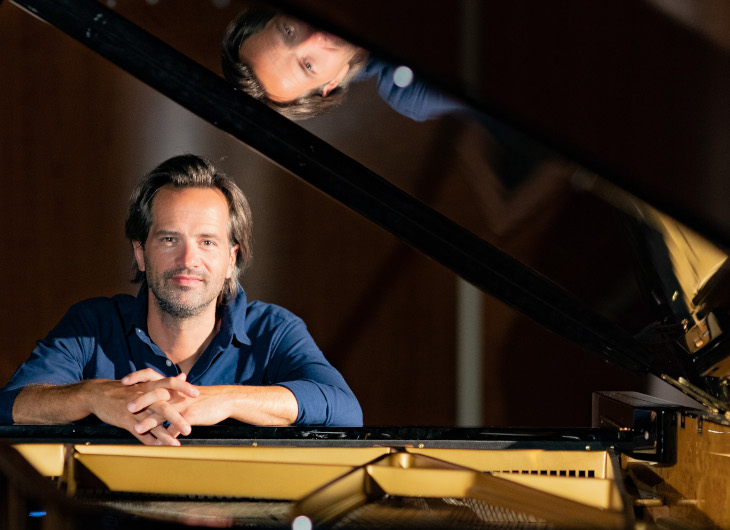
PETER JABLONSKI
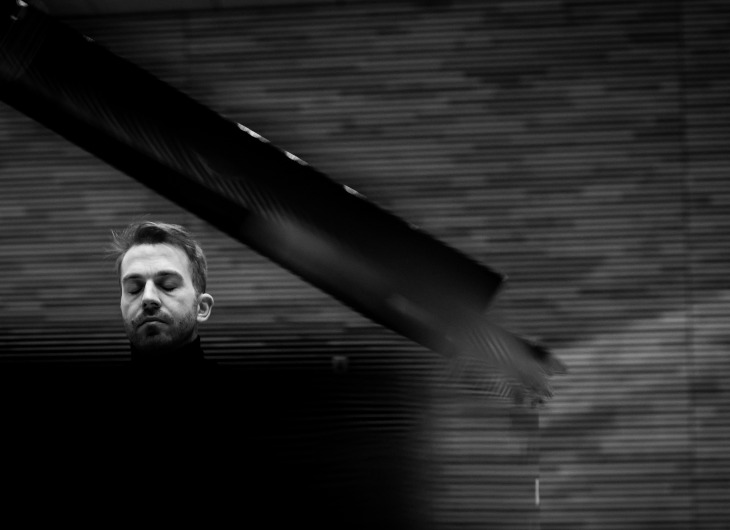
ADAM KOŚMIEJA
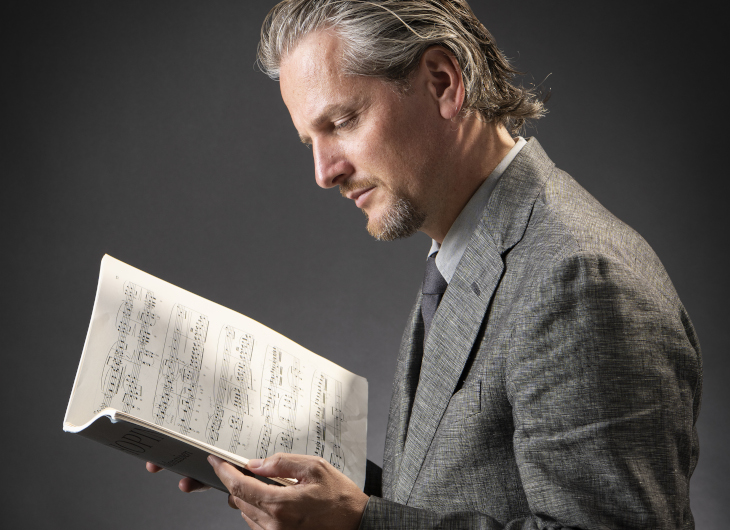
ALBERTO NONES
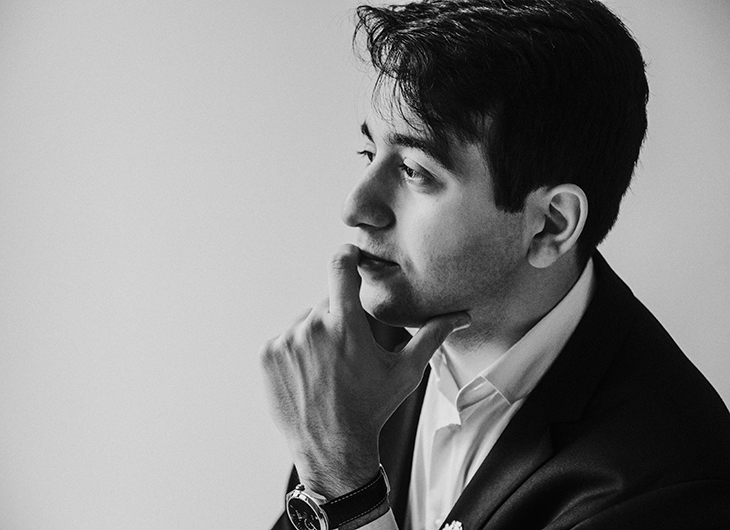
LUKA OKROS
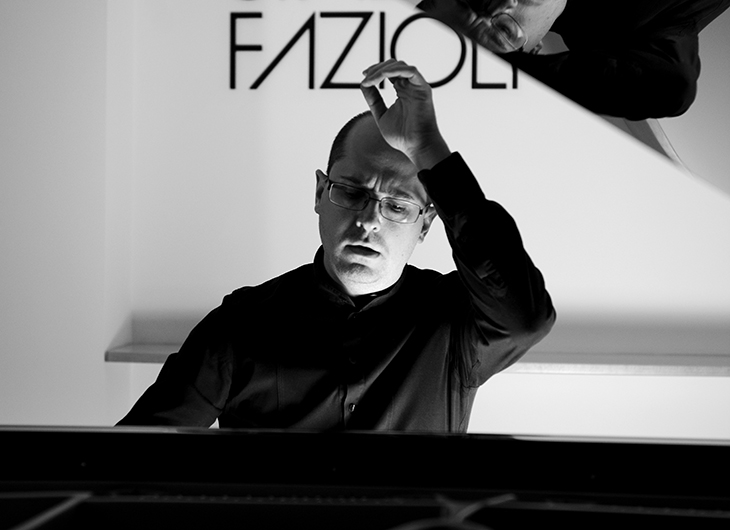
ROBERTO PLANO

ROBERTO PROSSEDA
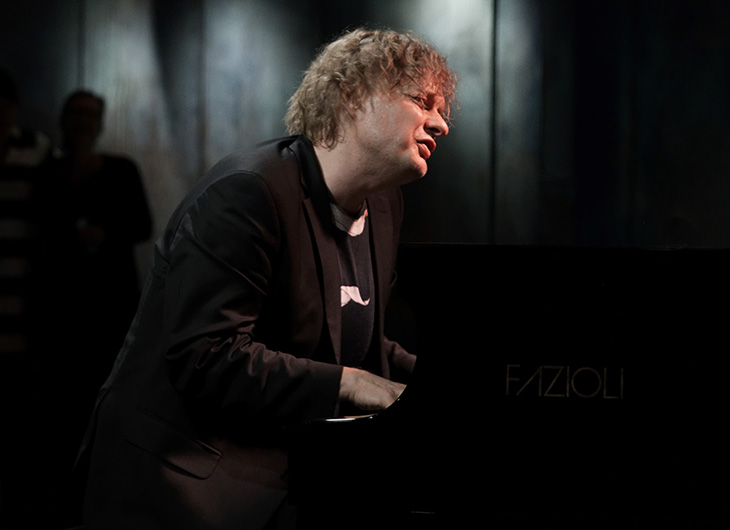
IIRO RANTALA

ELIANE RODRIGUES
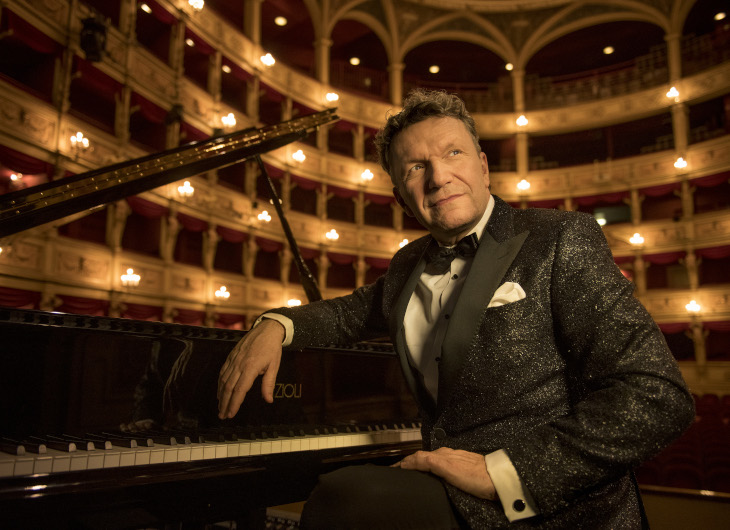
MARKUS SCHIRMER
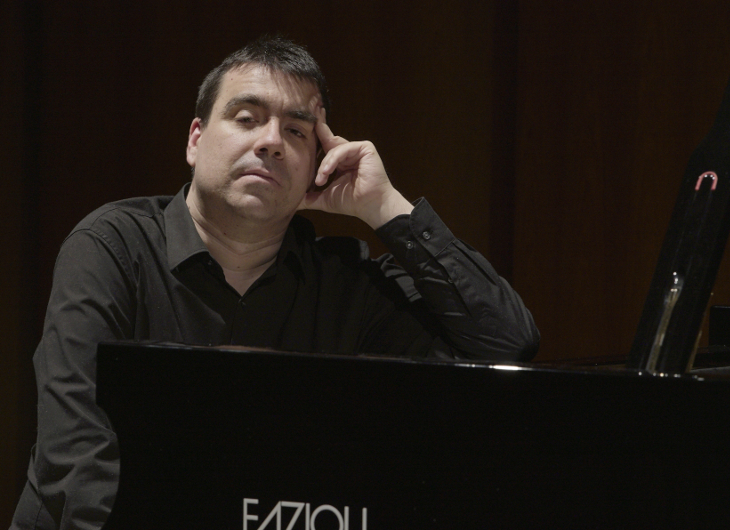
RICCARDO SCHWARTZ
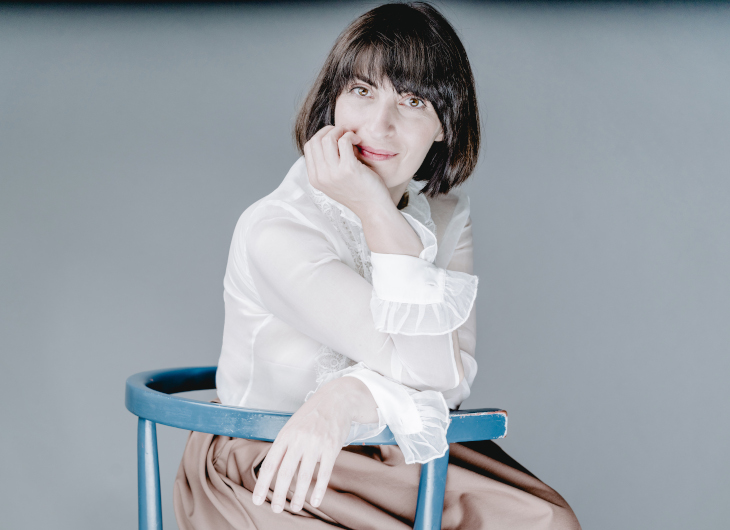
KETEVAN SEPASHVILI
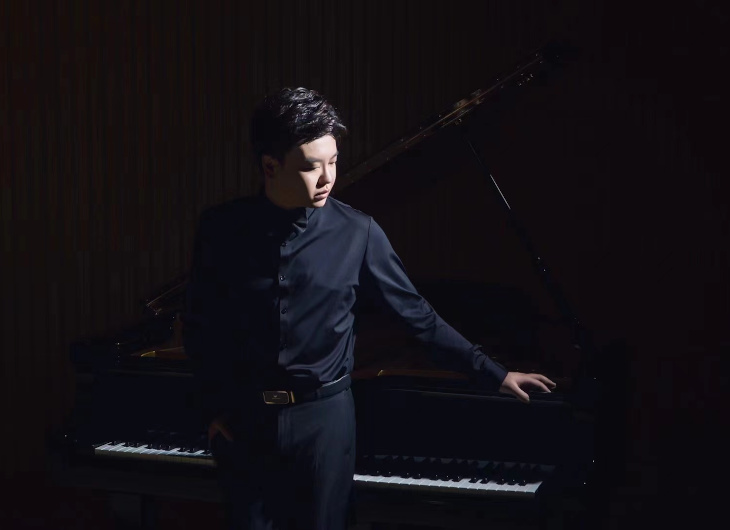
JIUMING SHEN
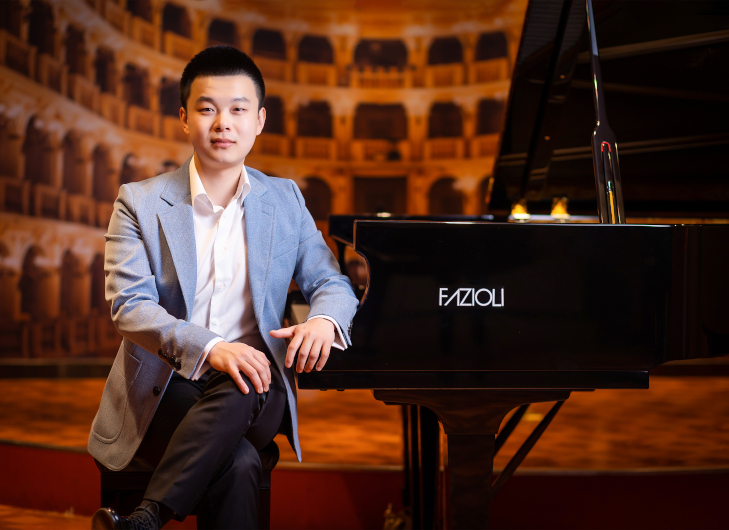
YAOZONG SONG
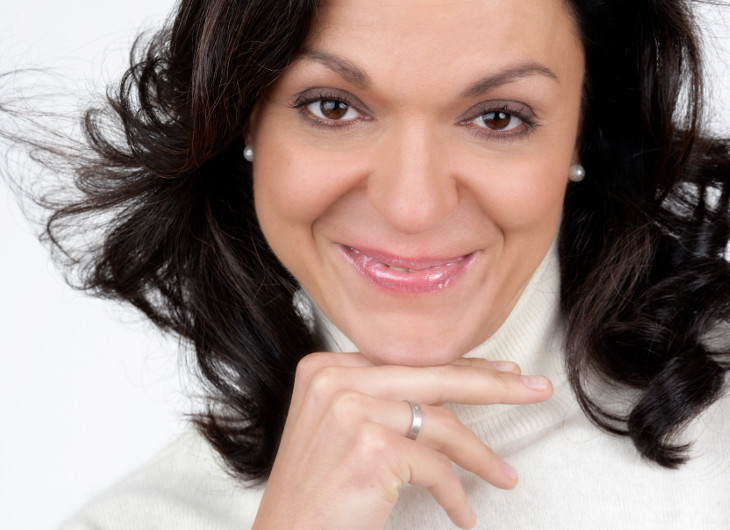
JASMINKA STANCUL
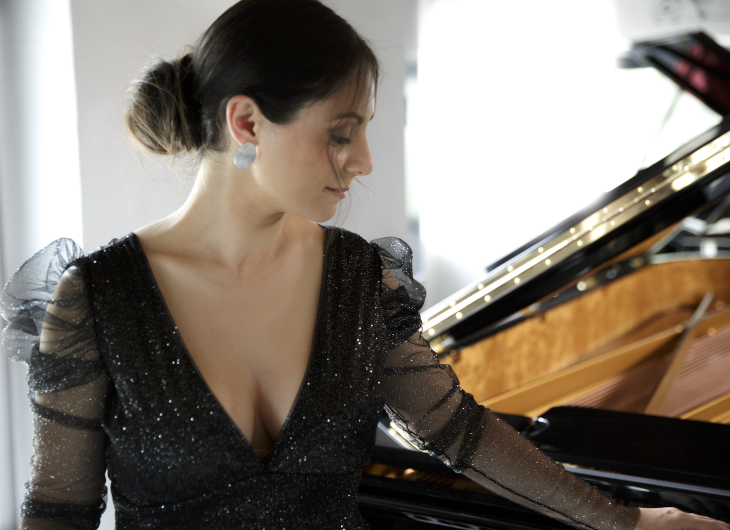
MARIANGELA VACATELLO
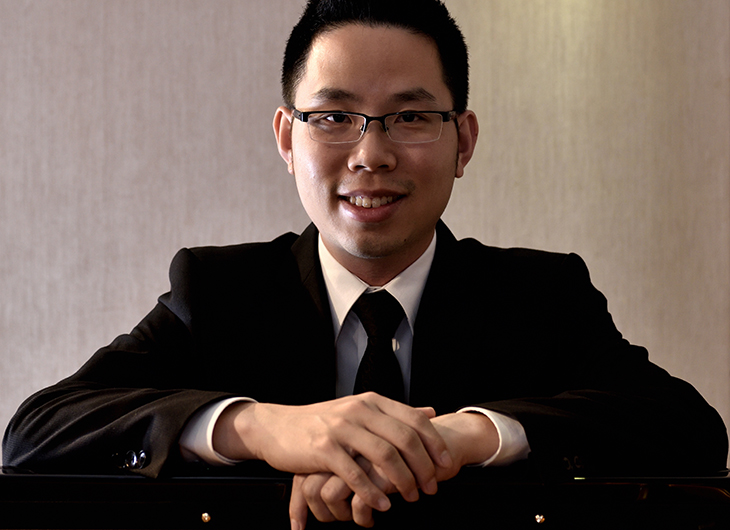
LUCAS WONG
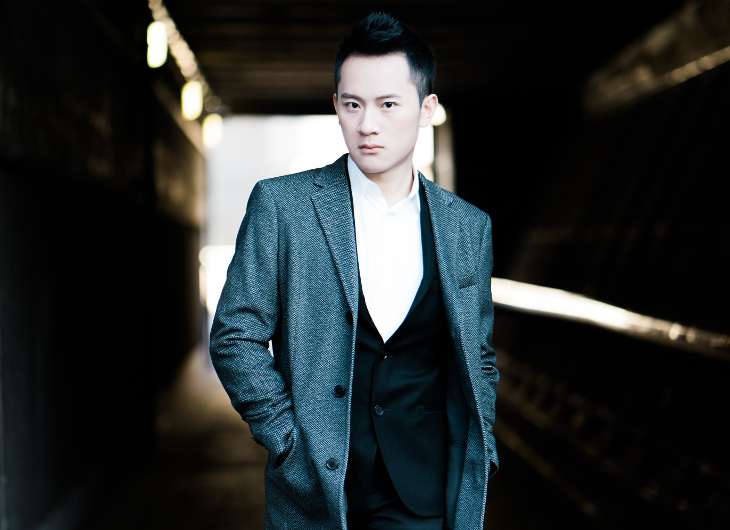
MING XIE
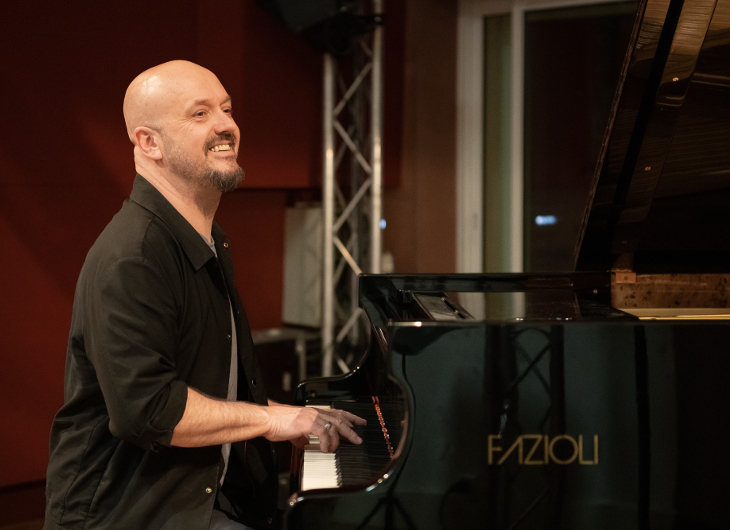
BOJAN Z

FAZIOLI CONCERT HALL
The FAZIOLI CONCERT HALL mirrors the image of a company devoted not only to the promotion of its own product, but also of the world of art and culture, for which FAZIOLI pianos are made. The hall, which has been standing next to the FAZIOLI factory since 2004, has 198 seats and 40 additional seats. Its stage can accommodate musical ensembles right up to the chamber orchestra and it has been designed to ensure the finest acoustic properties. Indeed, thanks to a series of movable devices – wooden “eyelashes”, wooden panels and sound-absorbing materials -, it is possible to modify the reverberation time of the hall and, consequently, influence the characteristics of the sound environment, obtaining more resonance or more absorption. By virtue of this versatility, the hall lends itself to hosting selections and piano testing – with particular regard to those destined to the largest concert halls, concerts and recordings.
CONCERTS
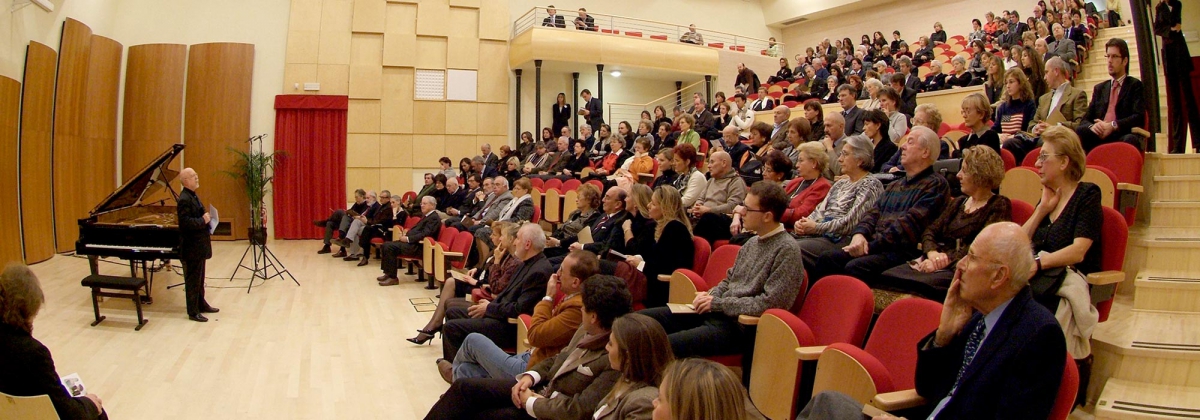
The Fazioli Concert Hall season, launched in 2005, has now reached its 13th edition: an important milestone that highlights the continuous and privileged contact of the FAZIOLI Company with the most renowned artists of the international concert scene, as well as the promotion of young artists – a dear aspect for FAZIOLI. Indeed, specifically for the pianists of the new generation FAZIOLI has conceived the new “Winners” concert series, dedicated to the winners of the most renowned piano competitions. All concerts are open to the public and the season draws a national as well as international audience, with a major positive impact on the local cultural development.
RECORDINGS
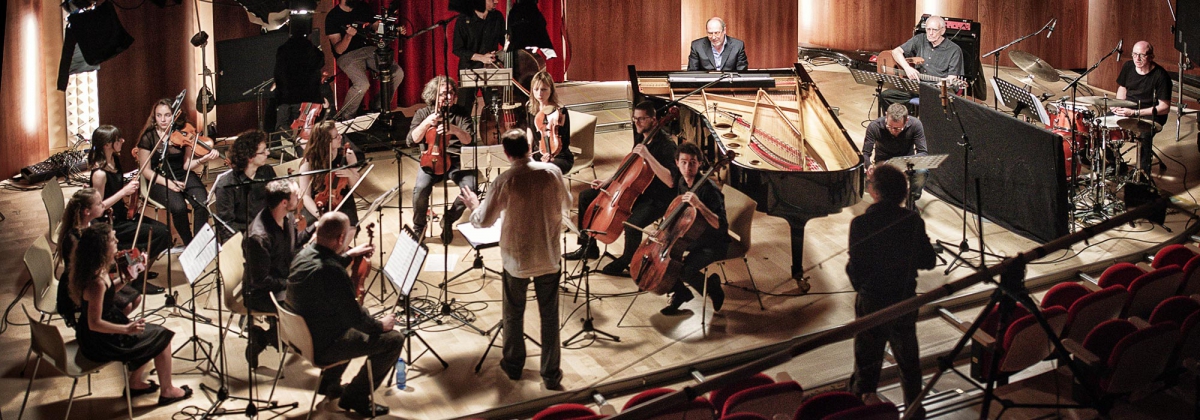
Recording at the Fazioli Concert Hall is the ideal solution for those looking for a unique environment offering the answer to the most diverse needs:
- variable acoustics;
- a high-level piano;
- a piano tuner at their full disposal;
- a quiet and professional working environment.
It is foreseen that the artists should work with their trusted sound engineers. Indeed, out of a precise choice, the hall is not equipped with microphones and mixers, since we preferred to create the conditions allowing external sound engineers to install their own equipment in the dedicated control room. To those who wish it, our offices can suggest sound engineers of proven reputation and experience, with whom artists (or their producers) are asked to maintain direct relations, both in economic and organizational terms.

OFF-SEASON CONCERTS
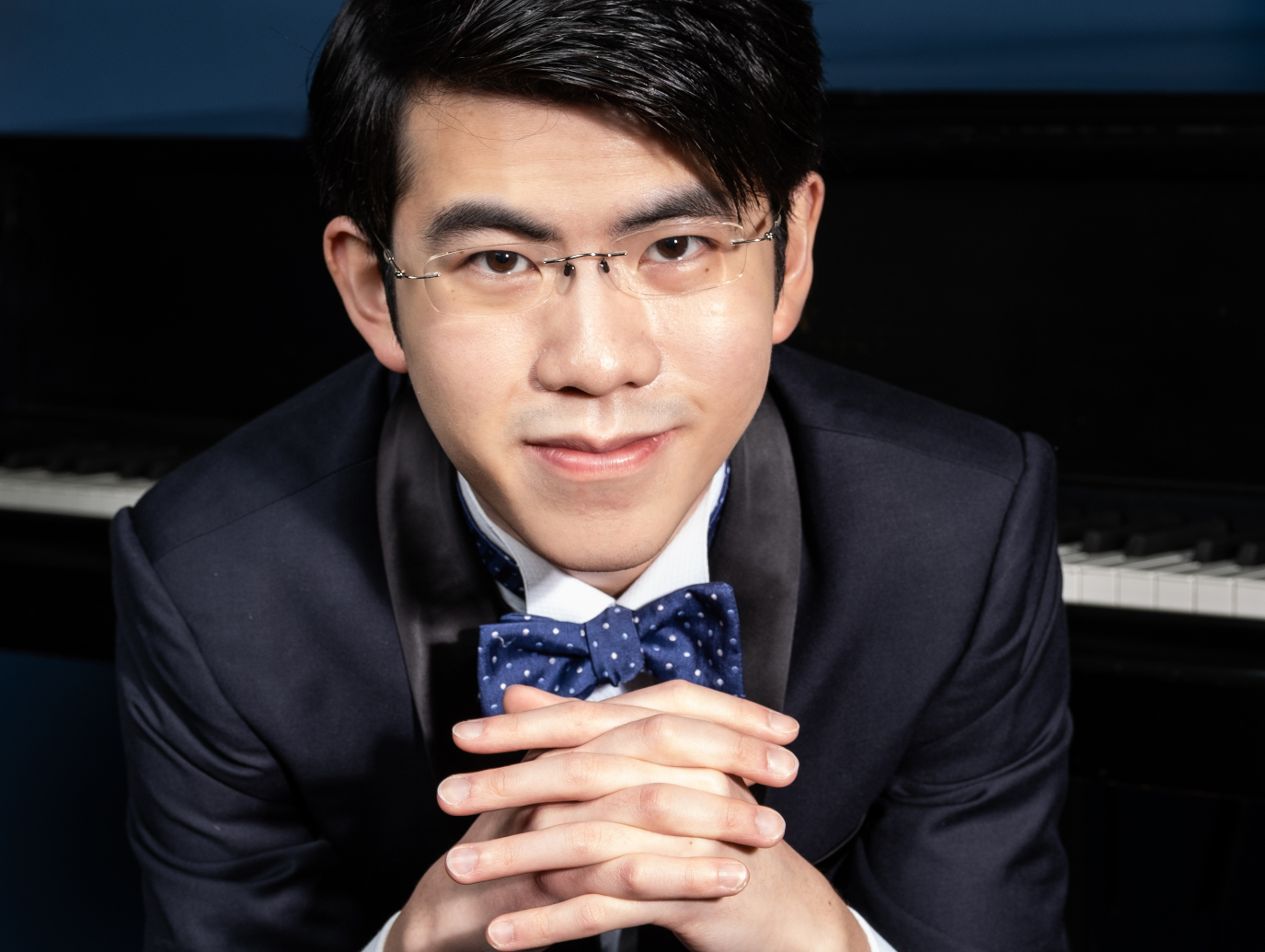
ARISTO SHAM
Friday, 10 June 2022 - 19:00
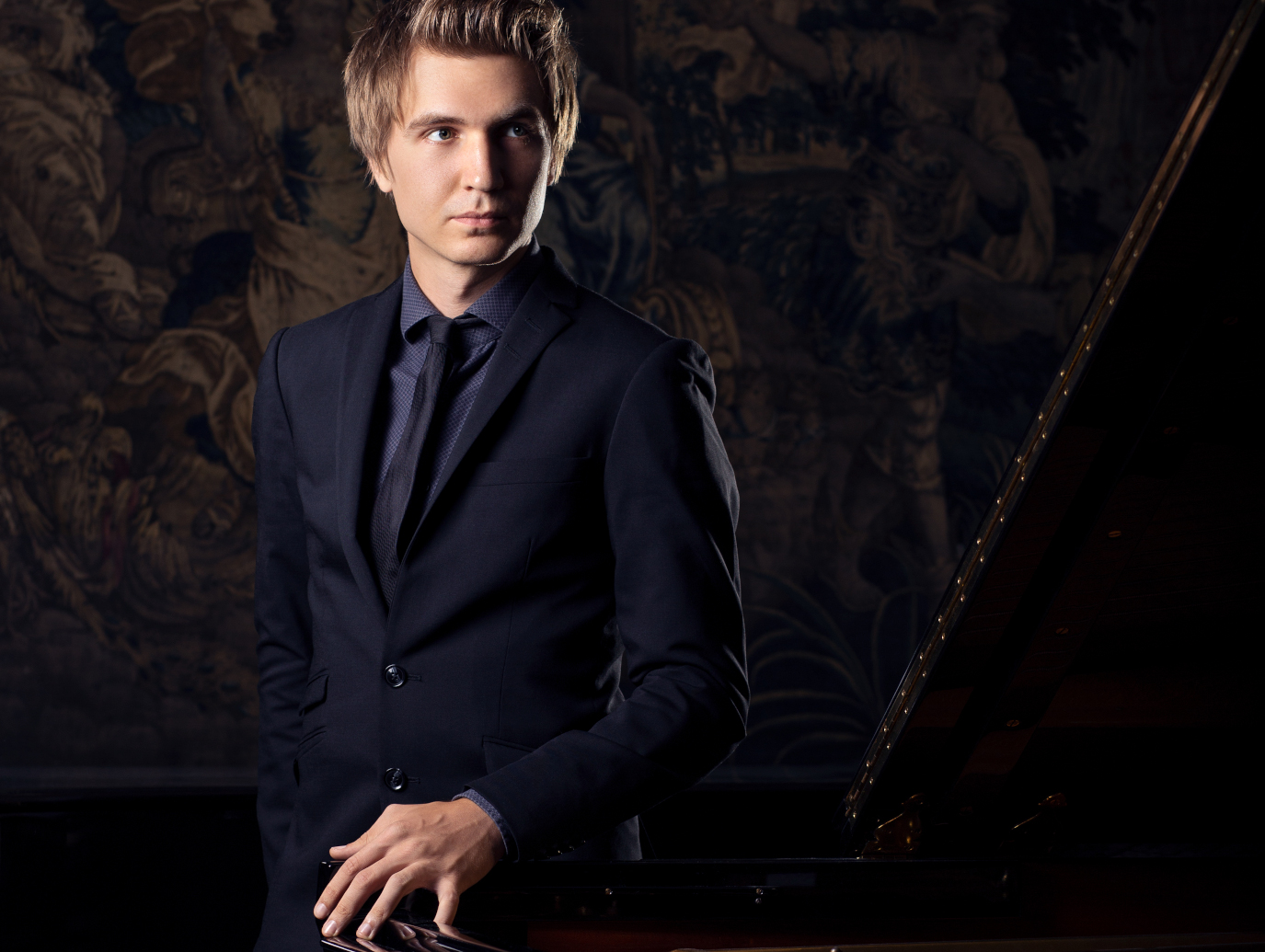
EVGENY KONNOV
Friday, 17 June 2022 - 19:00

SERGEY BELYAVSKY
Friday, 24 June 2022 - 19:00
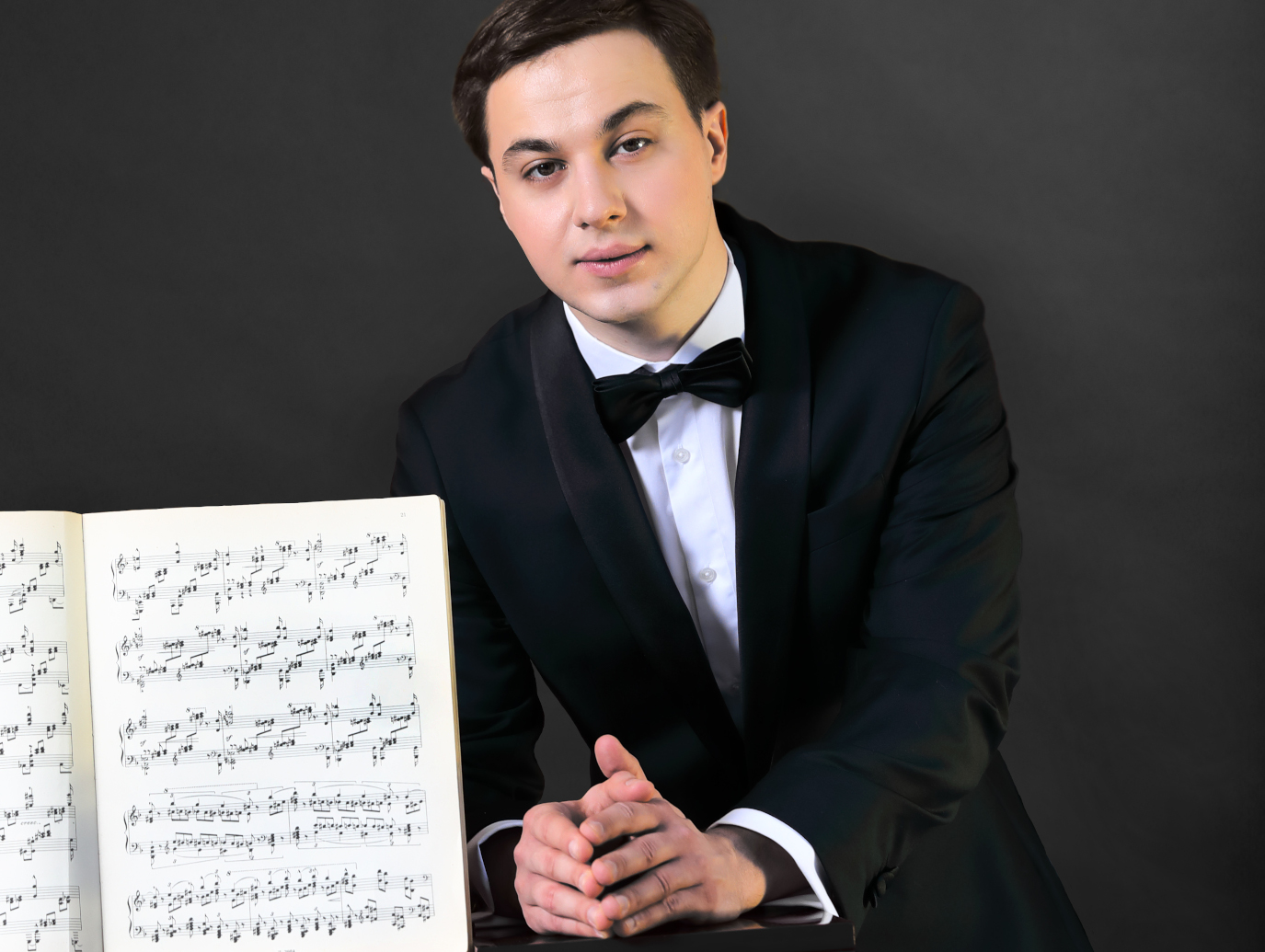
DMITRII KALASHNIKOV
Friday, 01 July 2022 - 19:00
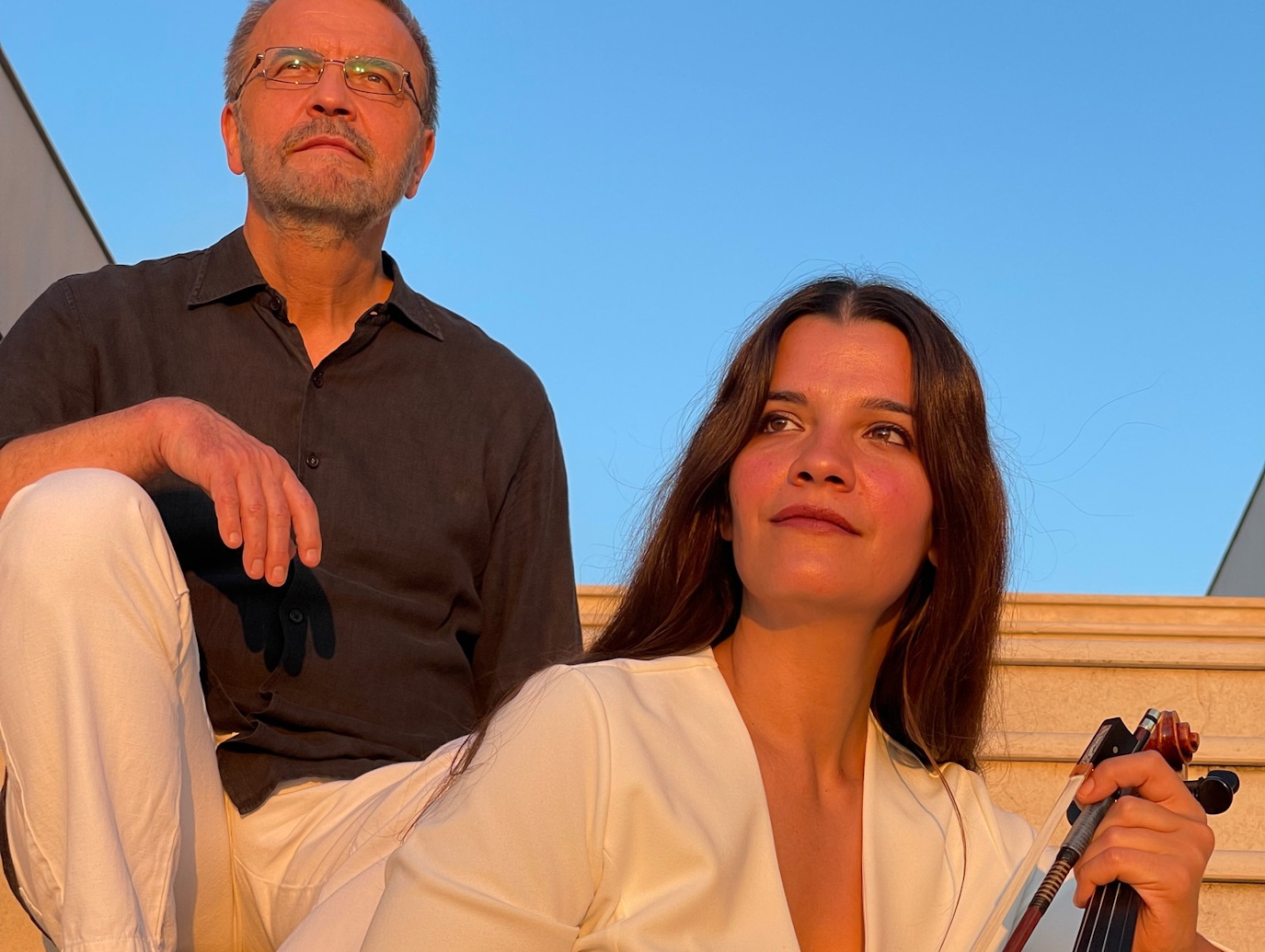
DANAE PAPAMATTHEOU-MATSCHKE – UWE MATSCHKE
Thursday, 21 July 2022 - 19:00

KOSTANDIN TASHKO | DAVIDE RANALDI
Friday, 16 September 2022 - 19:00

SEASON
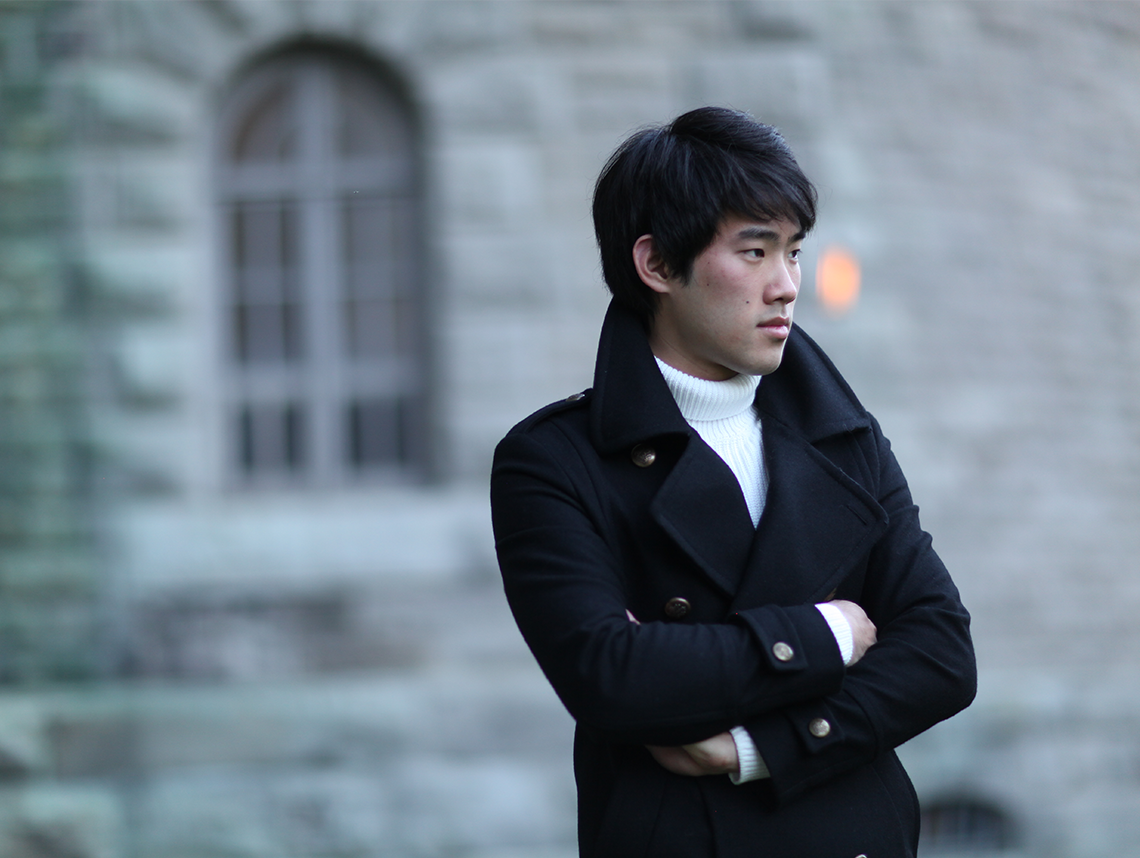
BRUCE LIU
Friday, 04 November 2022 - 19:30

ERNEST SO
Friday, 18 November 2022 - 19:30
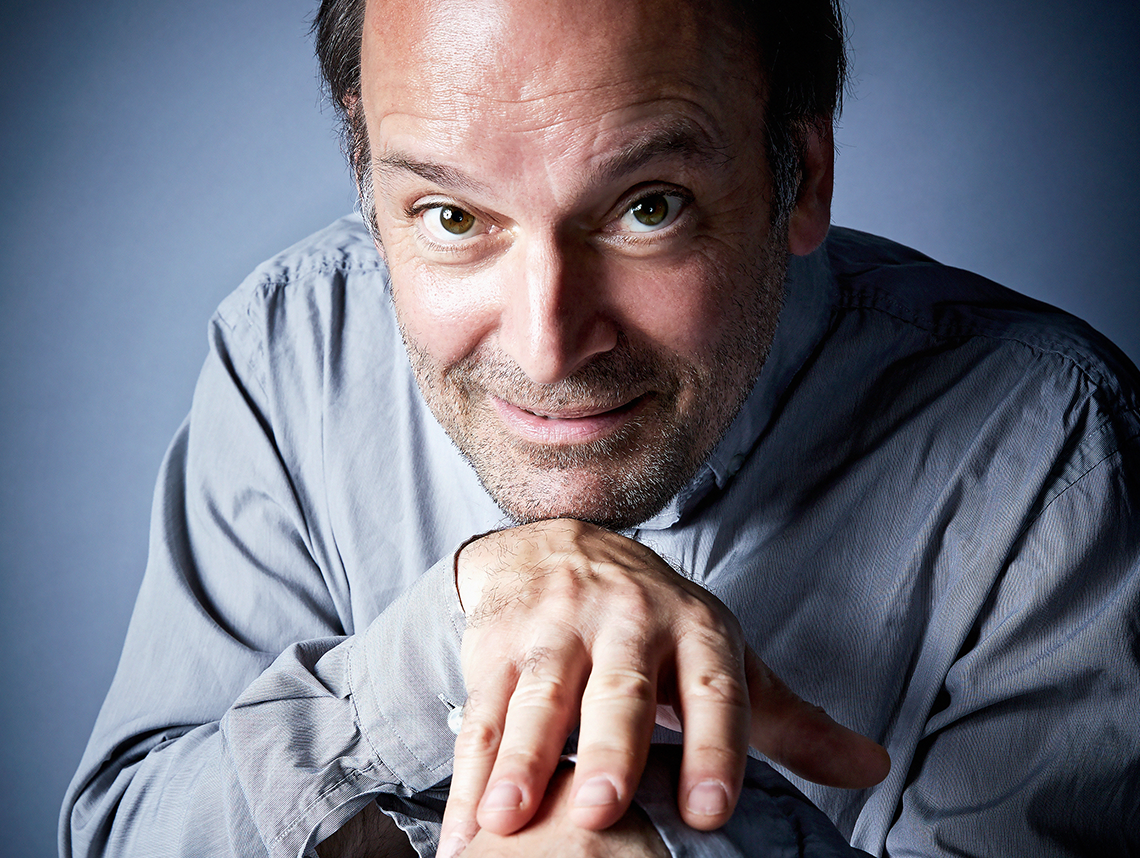
LOUIS LORTIE
Friday, 02 December 2022 - 19:30

YING LI
Friday, 16 December 2022 - 19:30
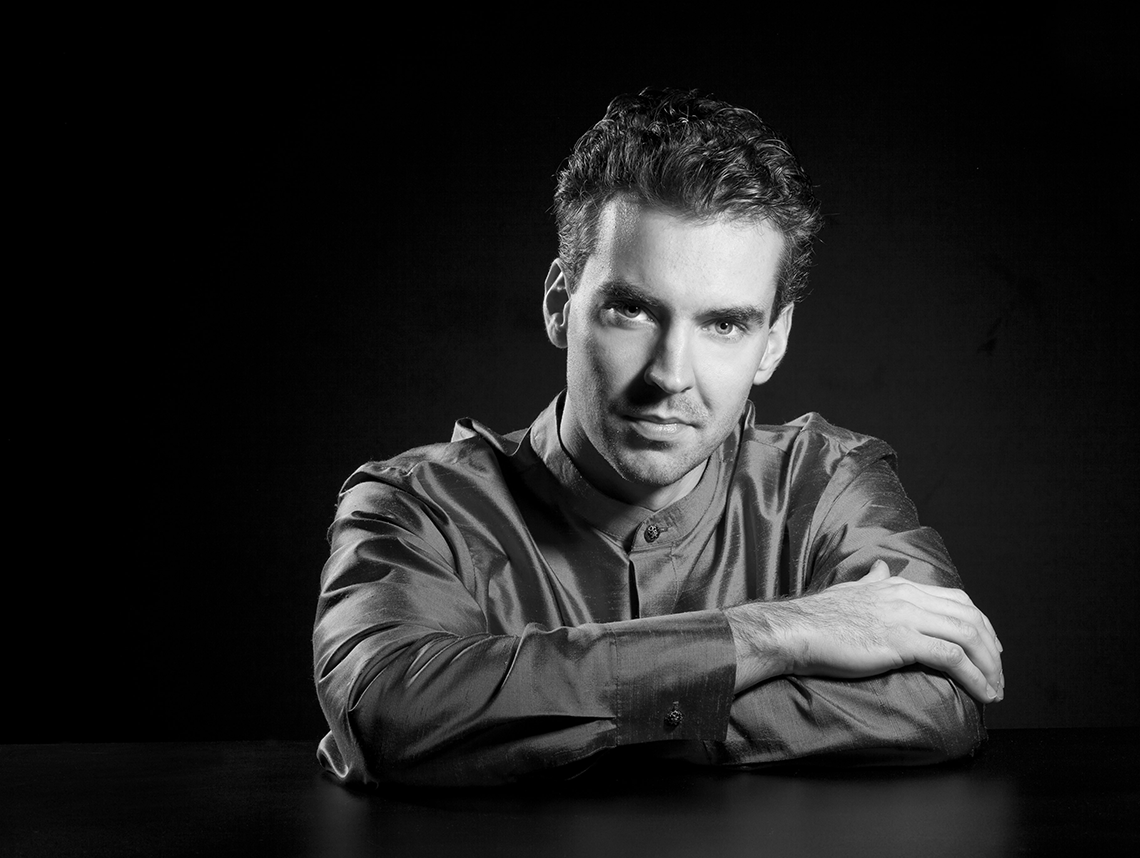
GORAN FILIPEC
Friday, 27 January 2023 - 19:30
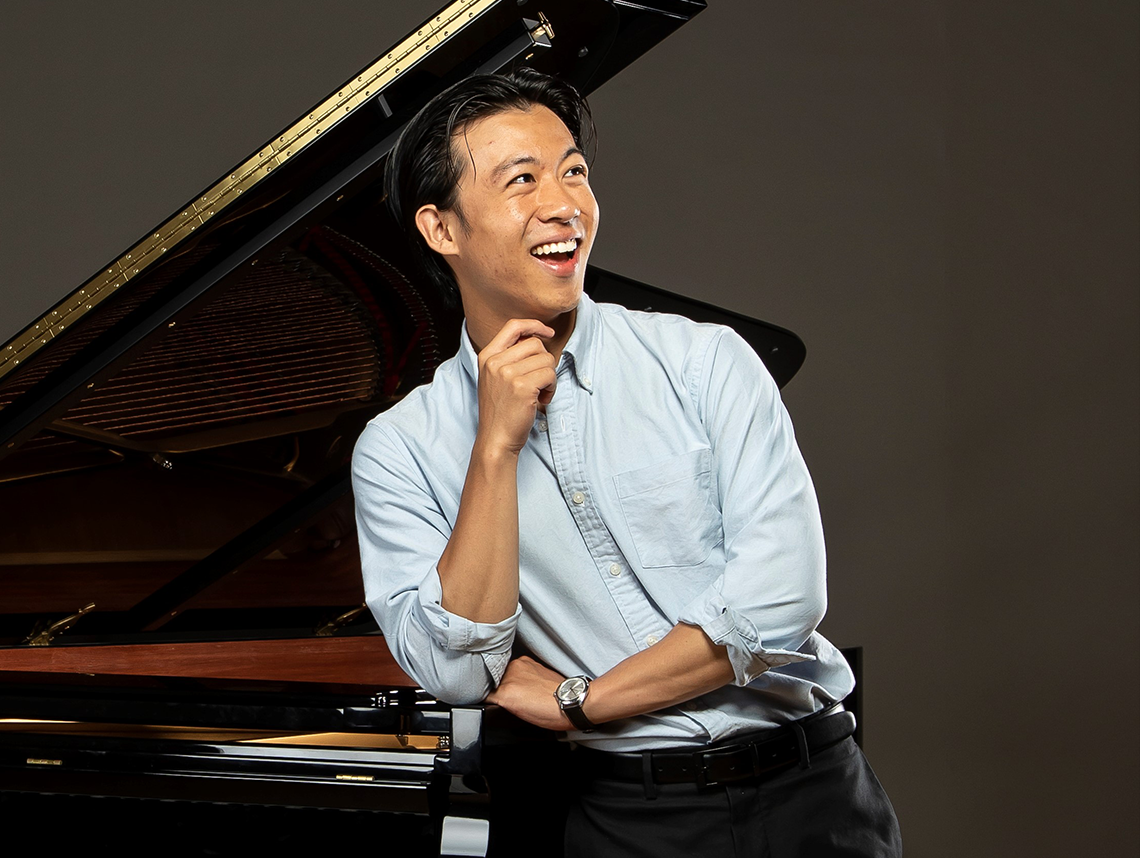
DEREK WANG
Friday, 10 February 2023 - 19:30
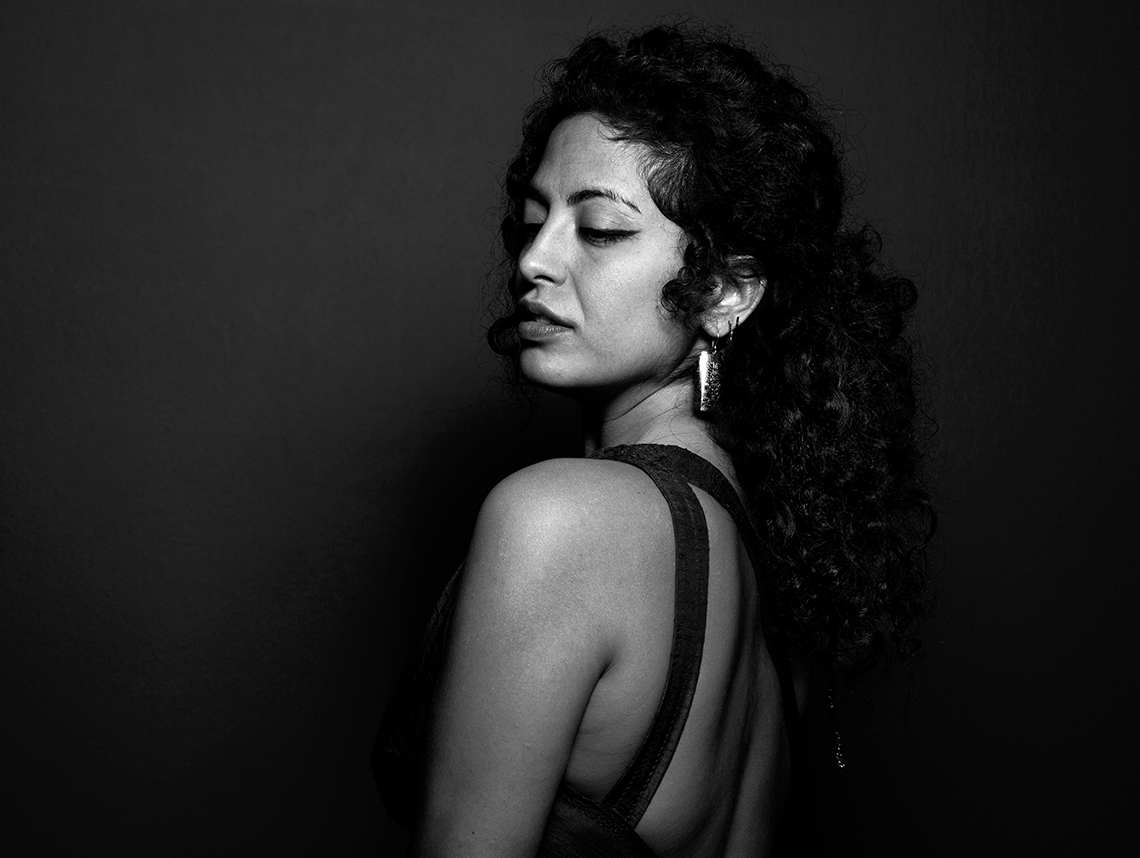
ALEXIA MOUZA
Friday, 24 February 2023 - 19:30
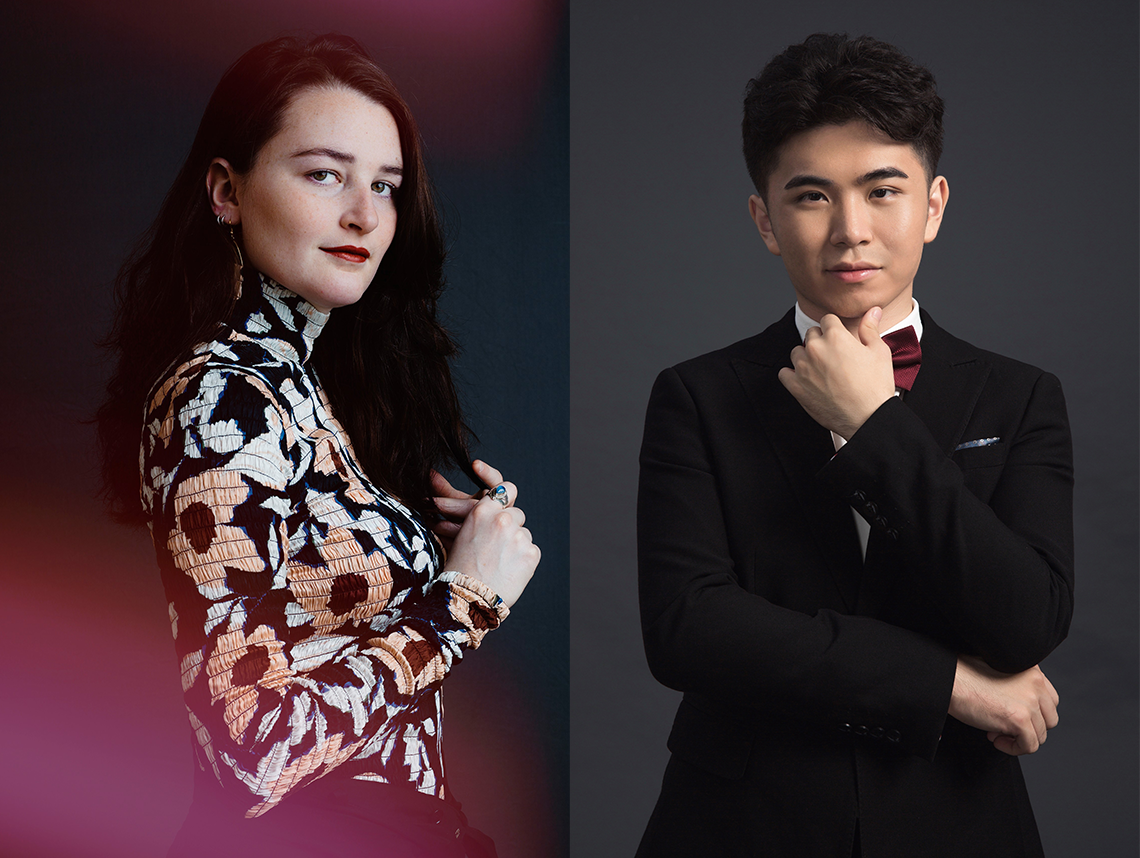
MARIE FRANÇOIS / TONY YIKE YANG
Friday, 10 March 2023 - 19:30
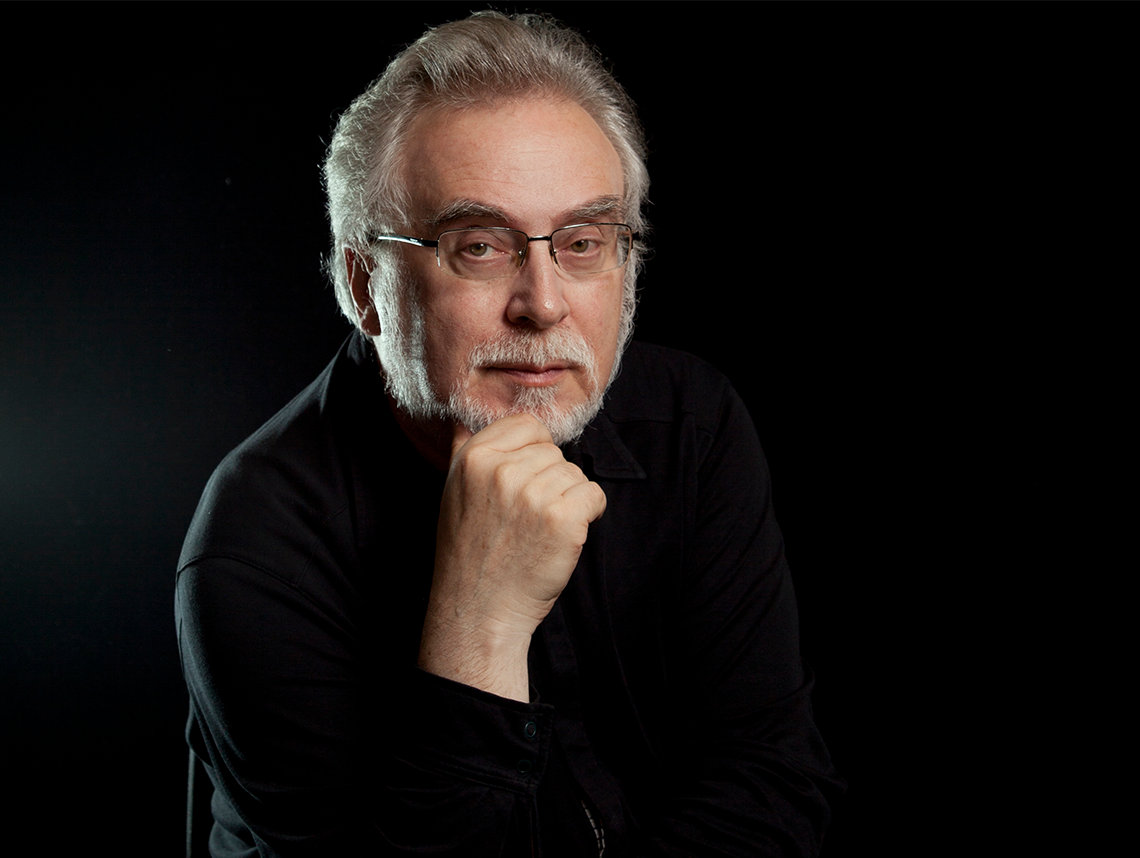
BORIS PETRUSHANSKY
Friday, 24 March 2023 - 19:30


